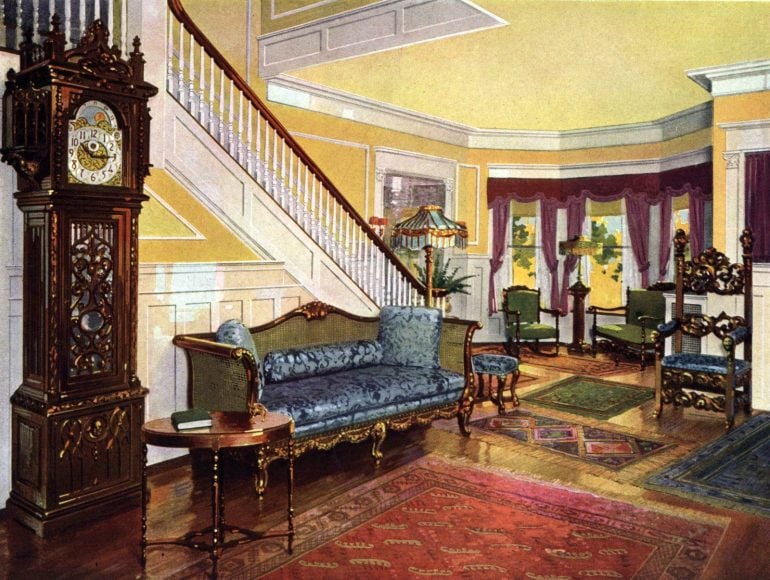See how vintage 1920s home decor turned ordinary spaces into stylish rooms
After World War I, though, people started rethinking what home could look like. Spaces got lighter, layouts felt less crowded, and there was a growing interest in keeping things both tidy and stylish. By the early 1920s, home decor had started to reflect those changes. Rooms were arranged with purpose, materials were more practical, and families gave more attention to how they lived in their space.
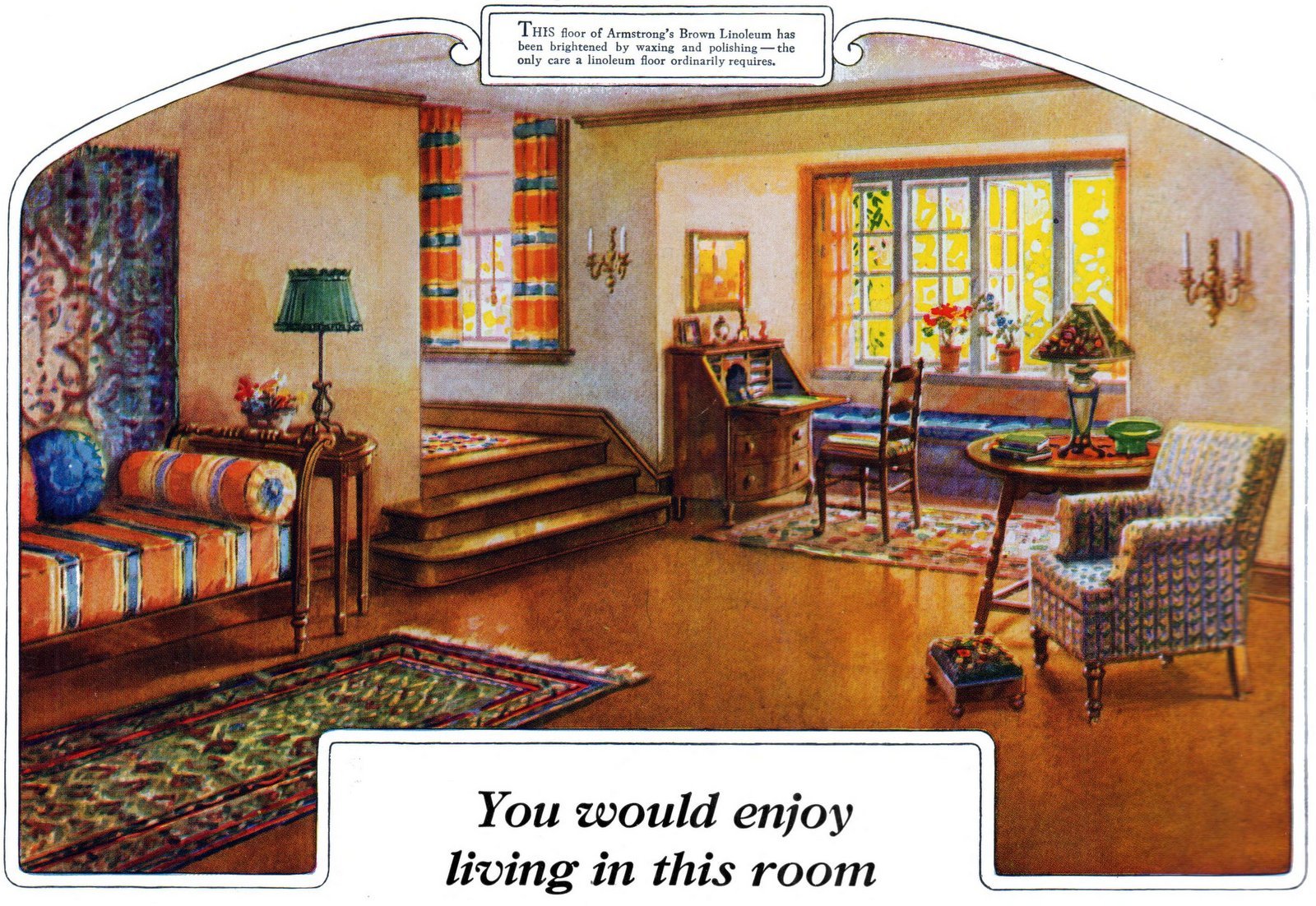
Color, in particular, played a big role in the shift of 1920s interior design. Linoleum, for example, had been common in kitchens, but by the early ’20s it was turning up in sunrooms, parlors and stair landings. Some styles looked like parquet or tile, offering a more polished finish at a lower cost. These floors held up well to wear and tear, but they also added structure and pattern to a room. Combined with lighter furniture and simpler fabrics, the effect was a cleaner, brighter home.
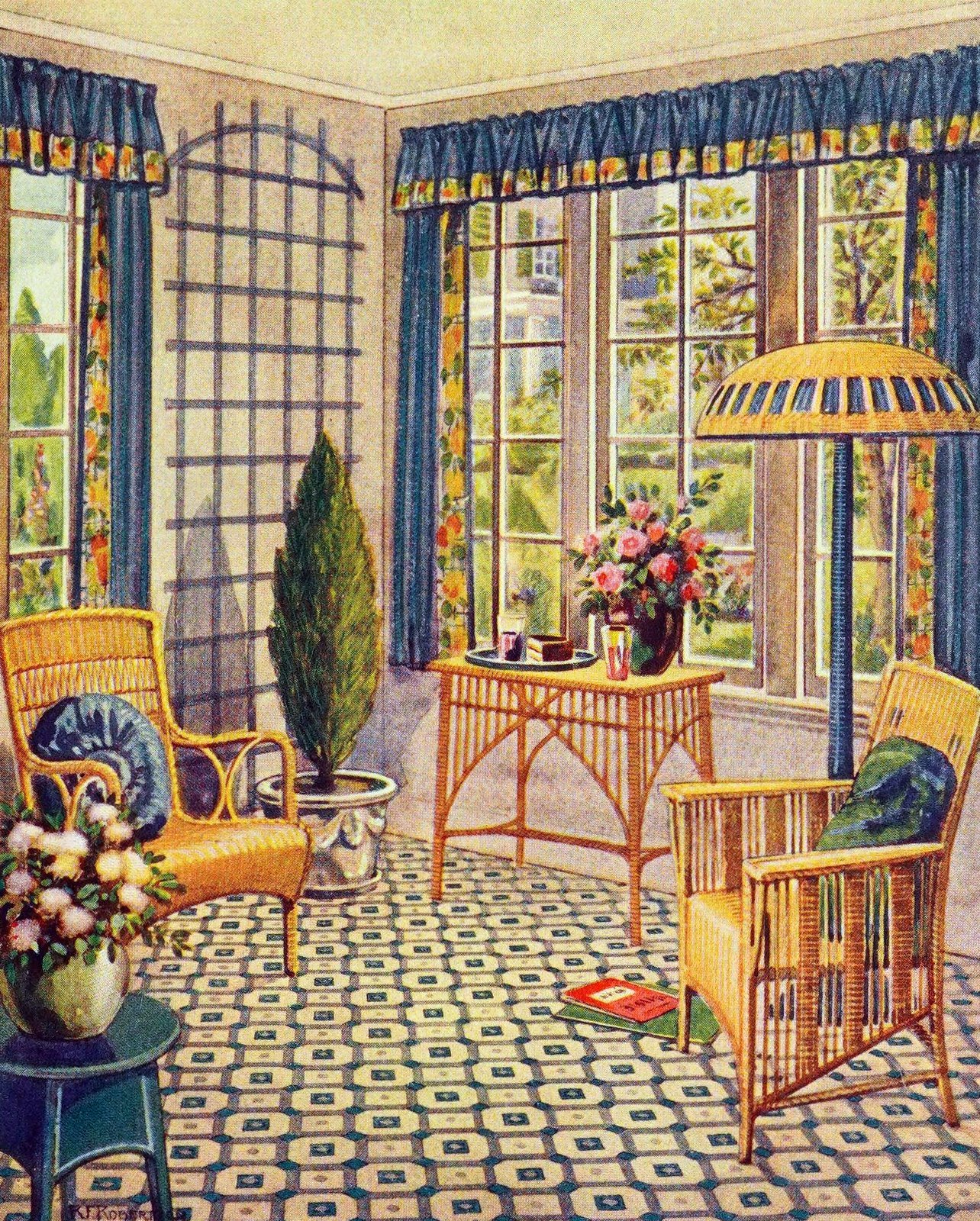
Magazines aimed at women helped shape the look of the time. Full-color ads — still relatively new and expensive to print — showed examples of well-kept homes with coordinated rooms and thoughtfully arranged furnishings. Bedrooms were cheerful and organized, kitchens were efficient and living spaces had a clear sense of order. These layouts gave readers visual ideas for how to pull a space together in a way that felt current.
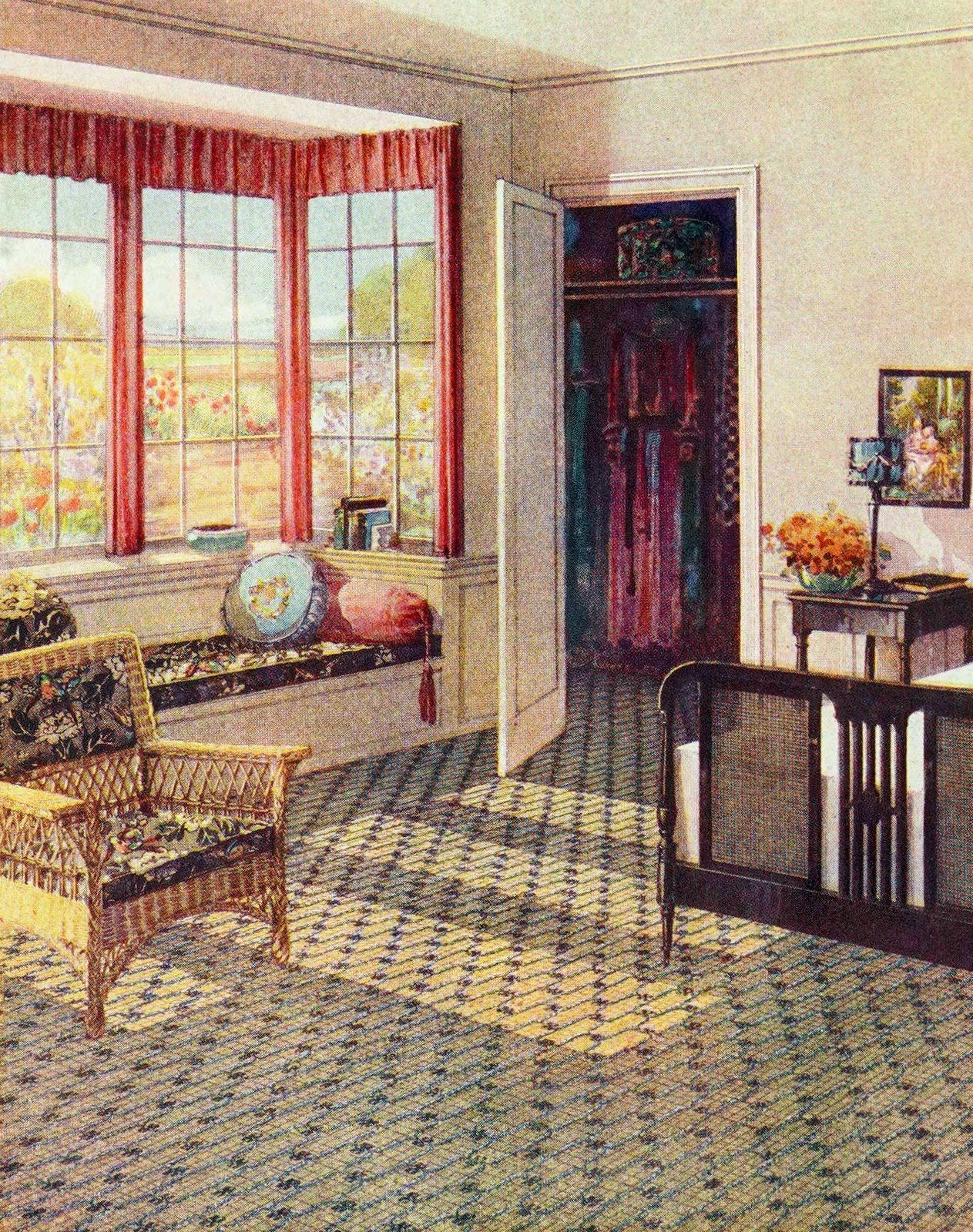
The layout of homes was changing too. Attics became extra rooms, kids had dedicated spaces, and sun porches worked as everyday sitting areas. The idea was to make the home work better for family life. Materials were chosen for usefulness, but they still had to look nice. It was a practical approach that also made room for a little style.
SEE MORE: 1920s house plans: 74 charming vintage designs that shaped American homes
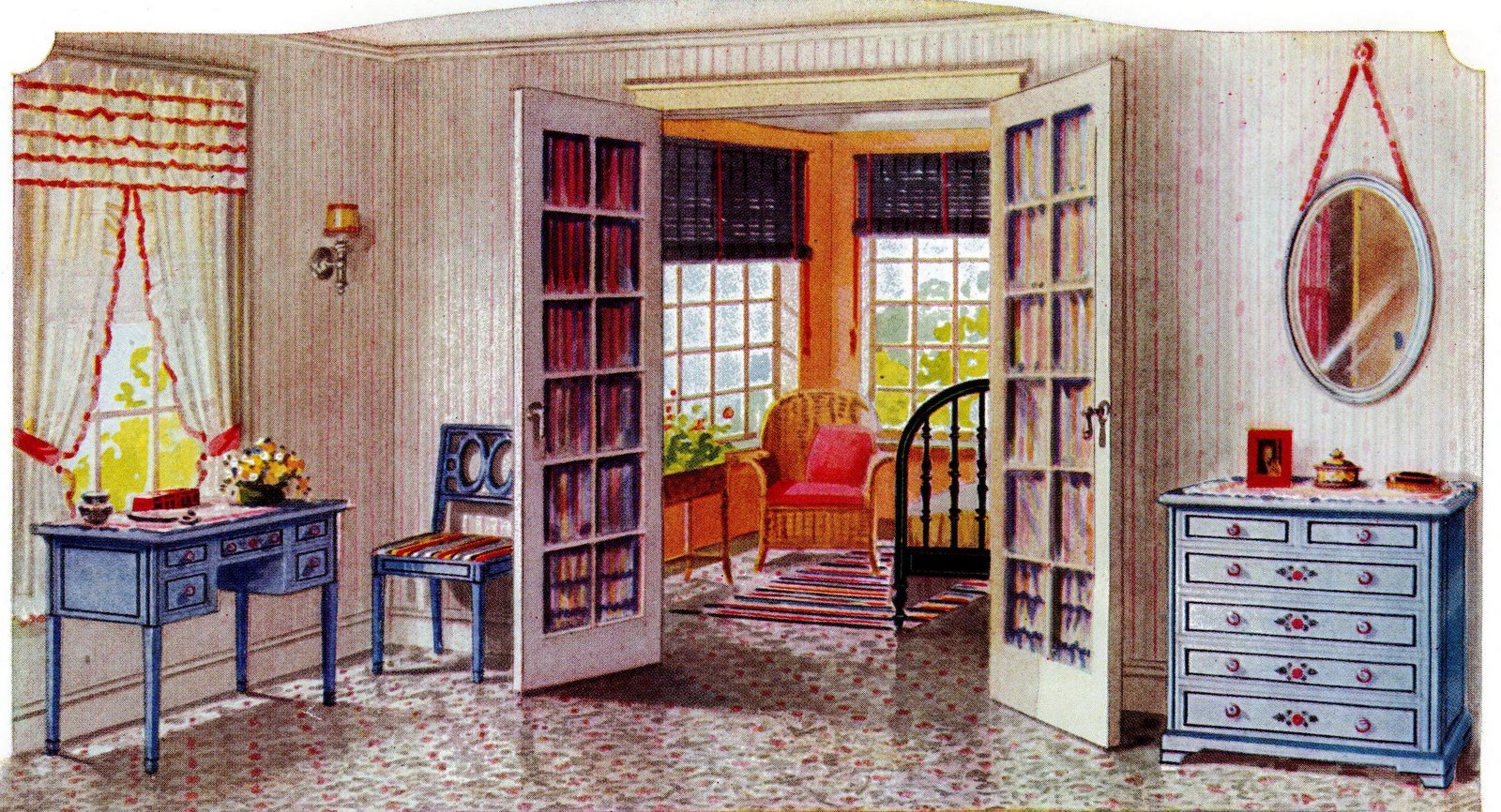
Living room decor from the 1920s
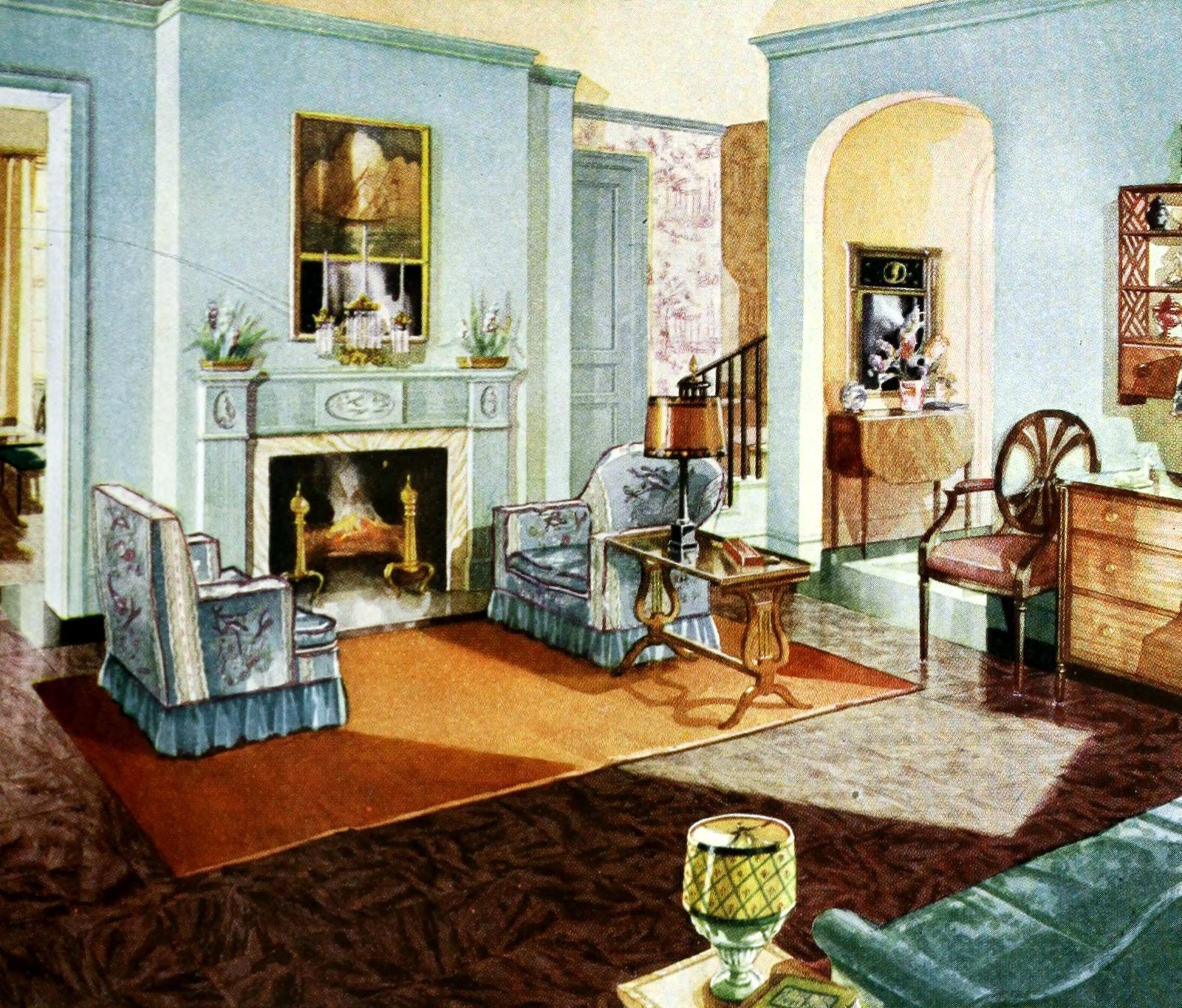
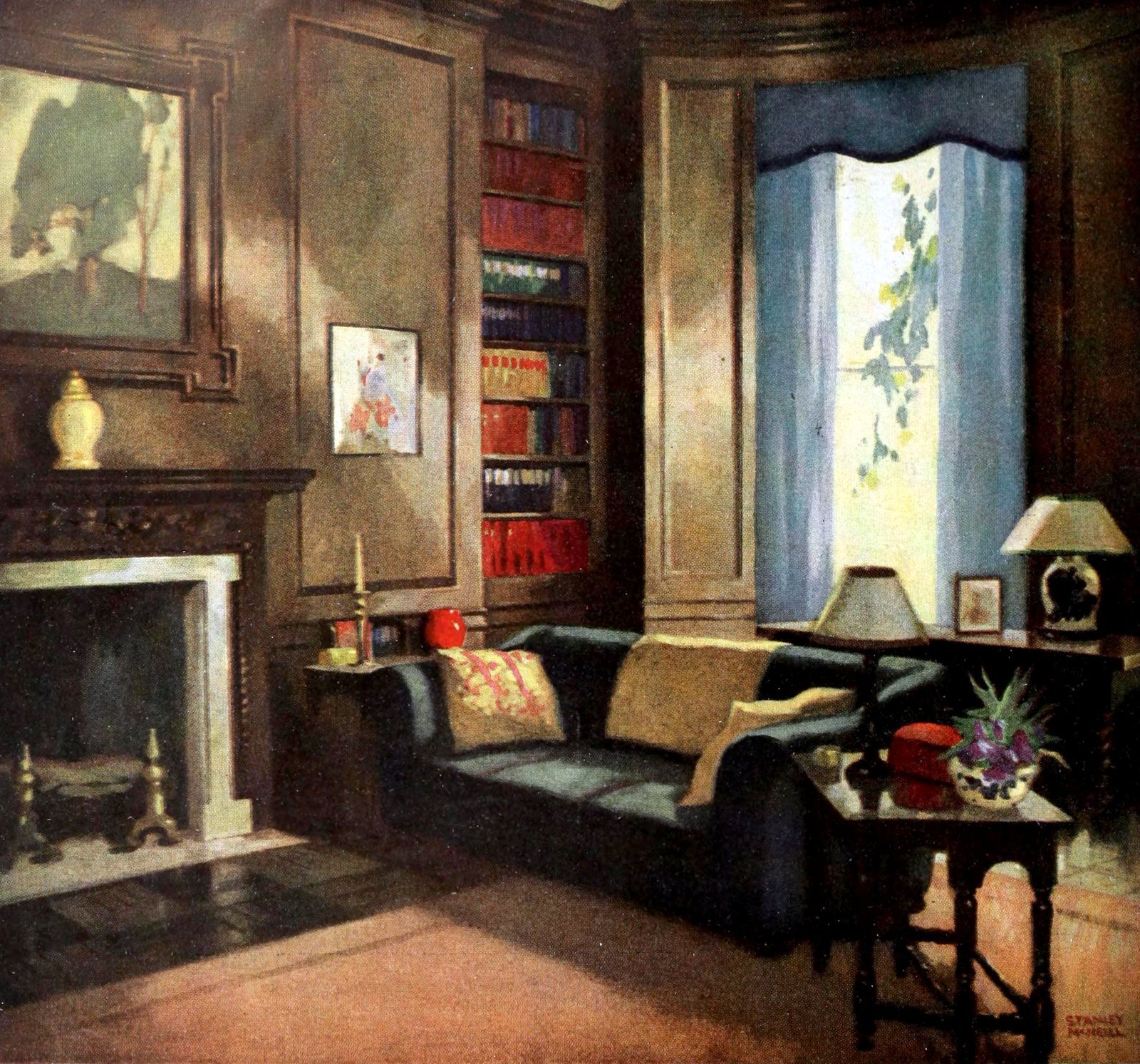
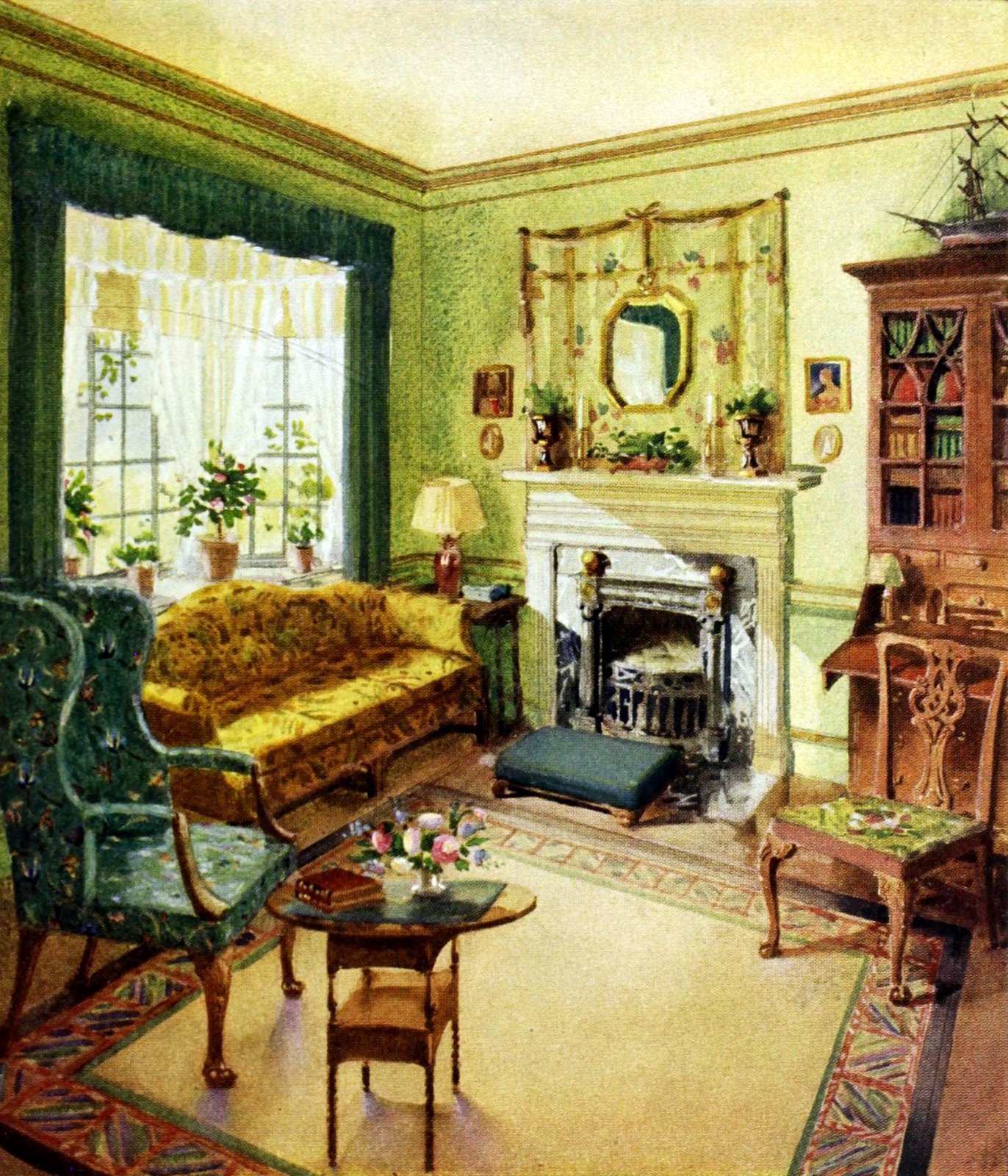
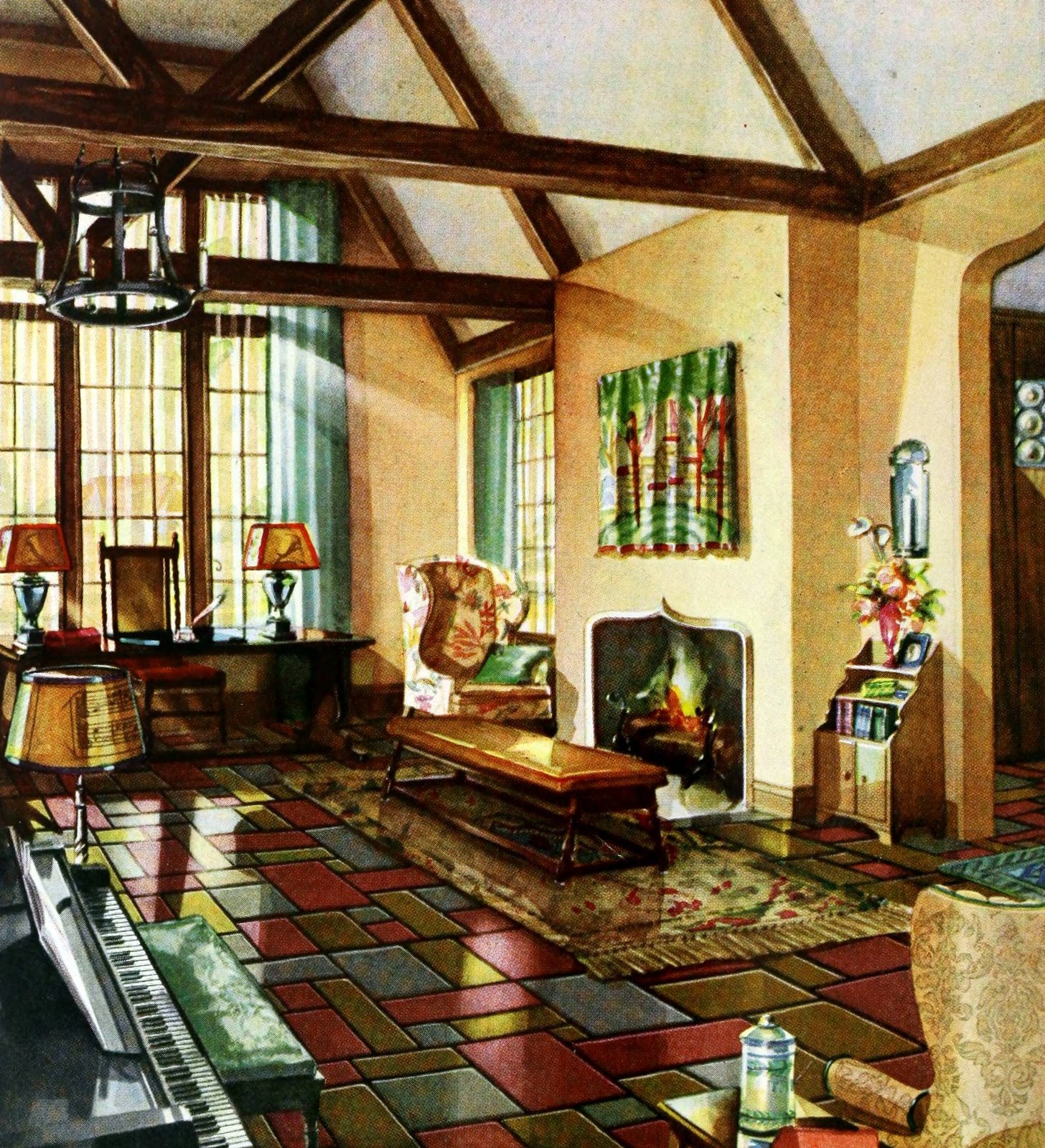

1920s interior decor for bedrooms

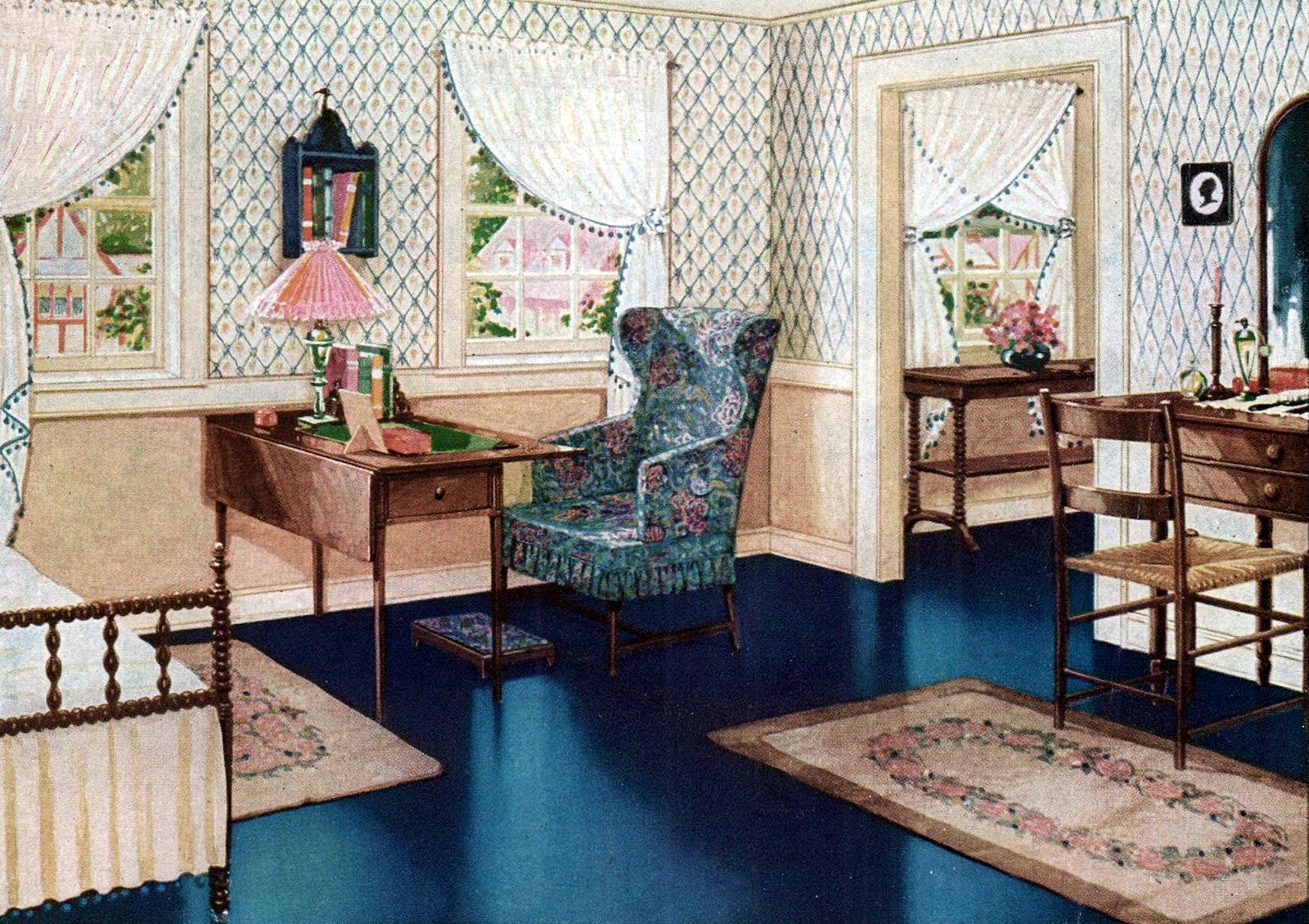
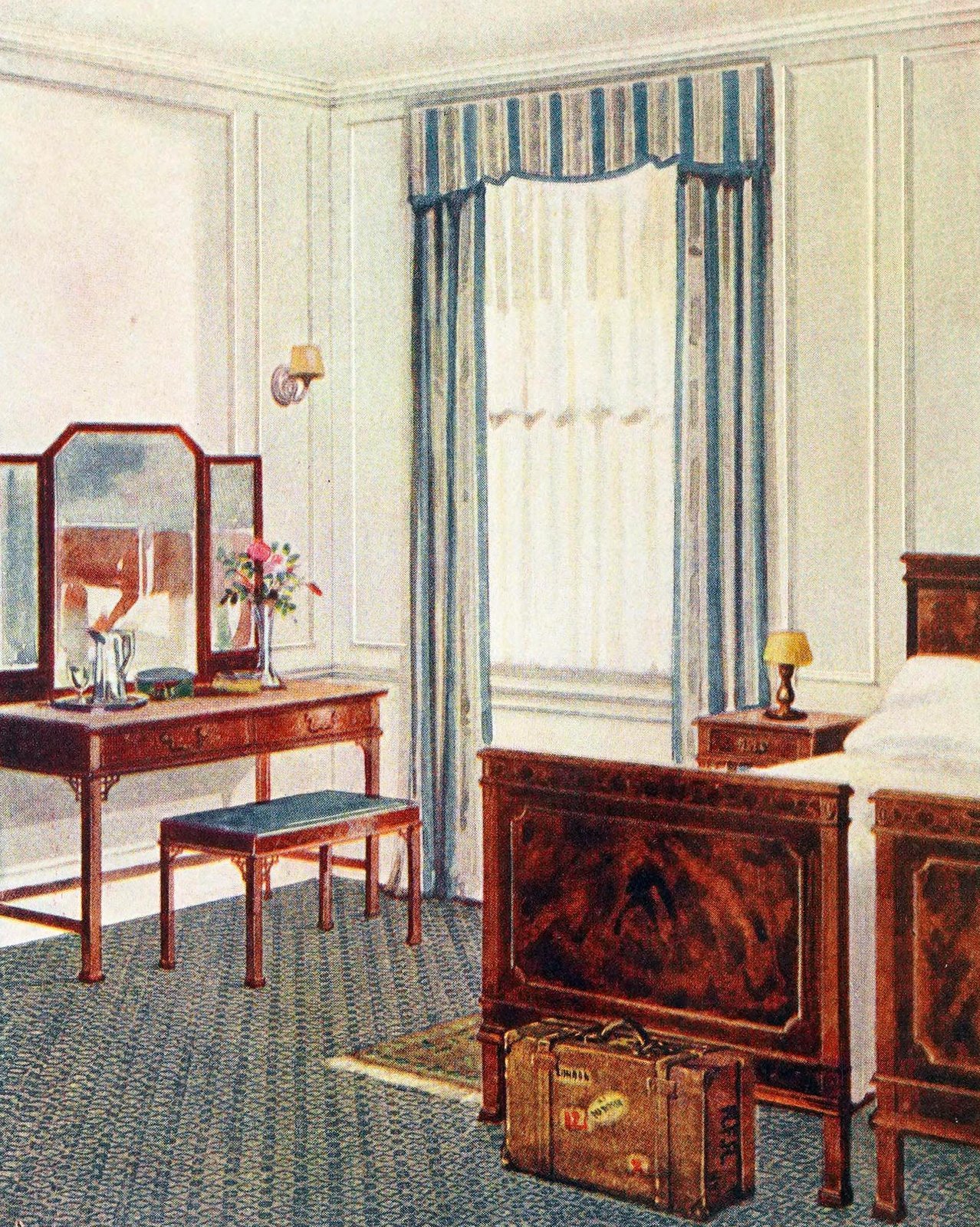
Vintage bathroom decorating stlyes from the 1920s

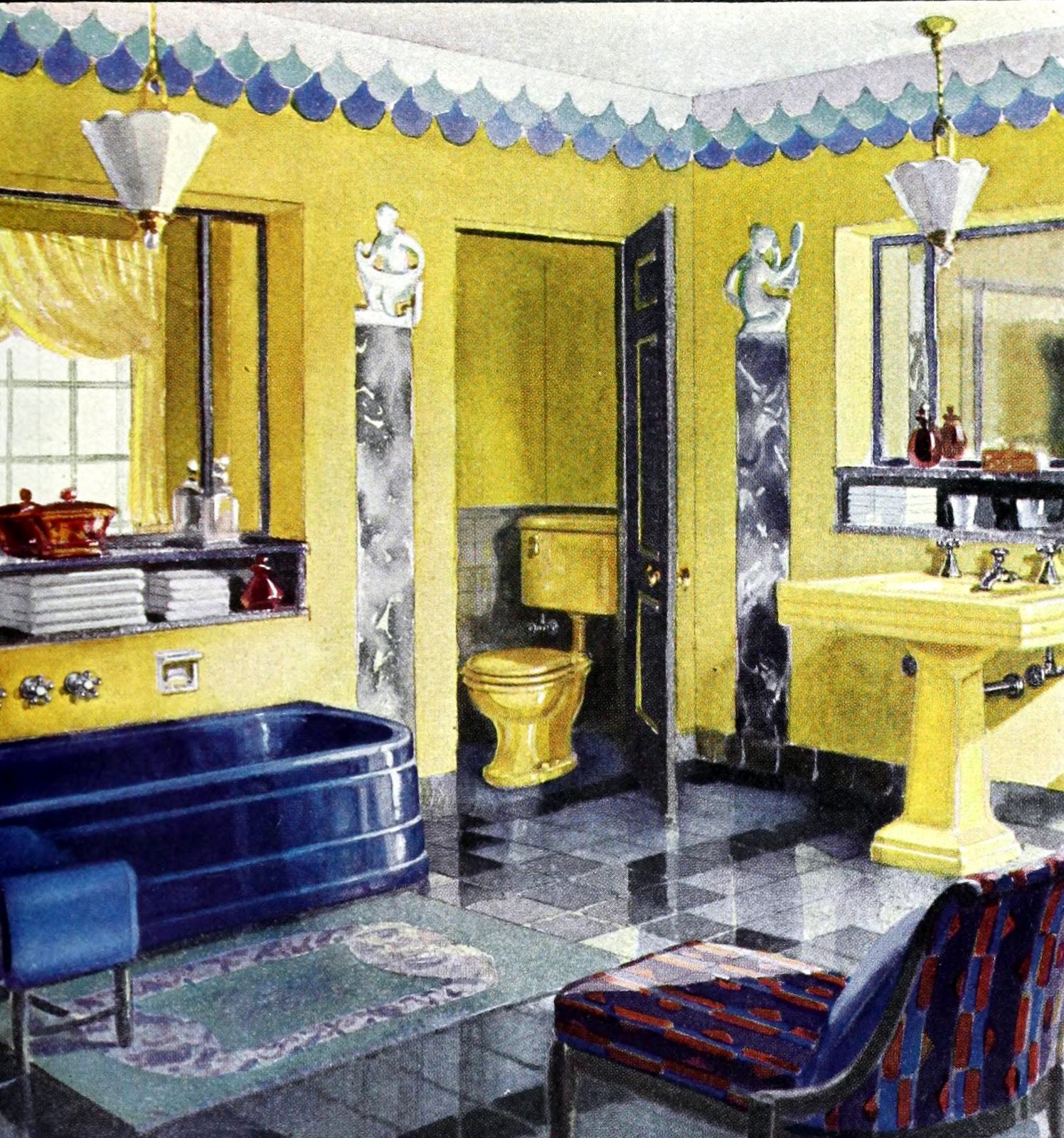
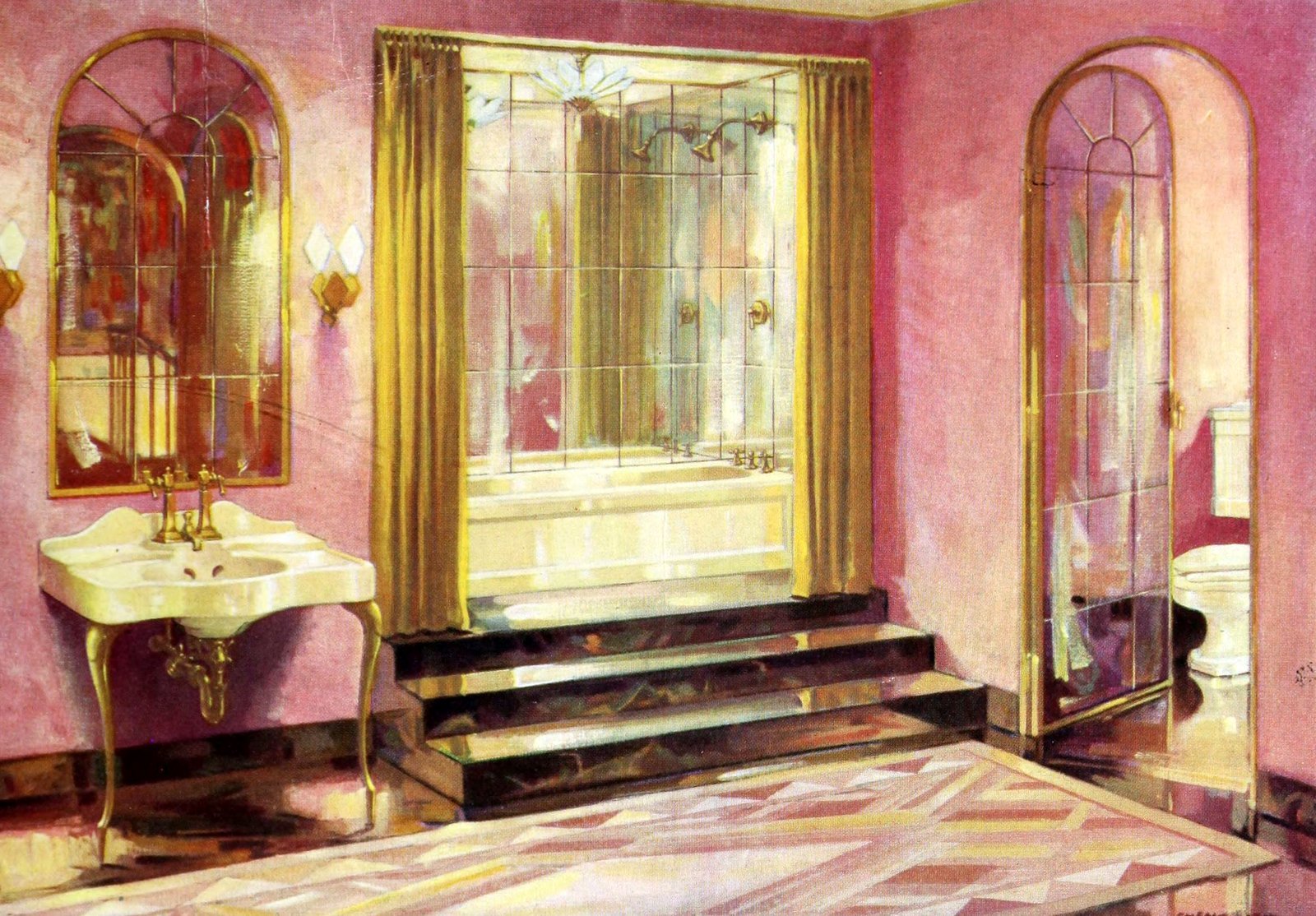

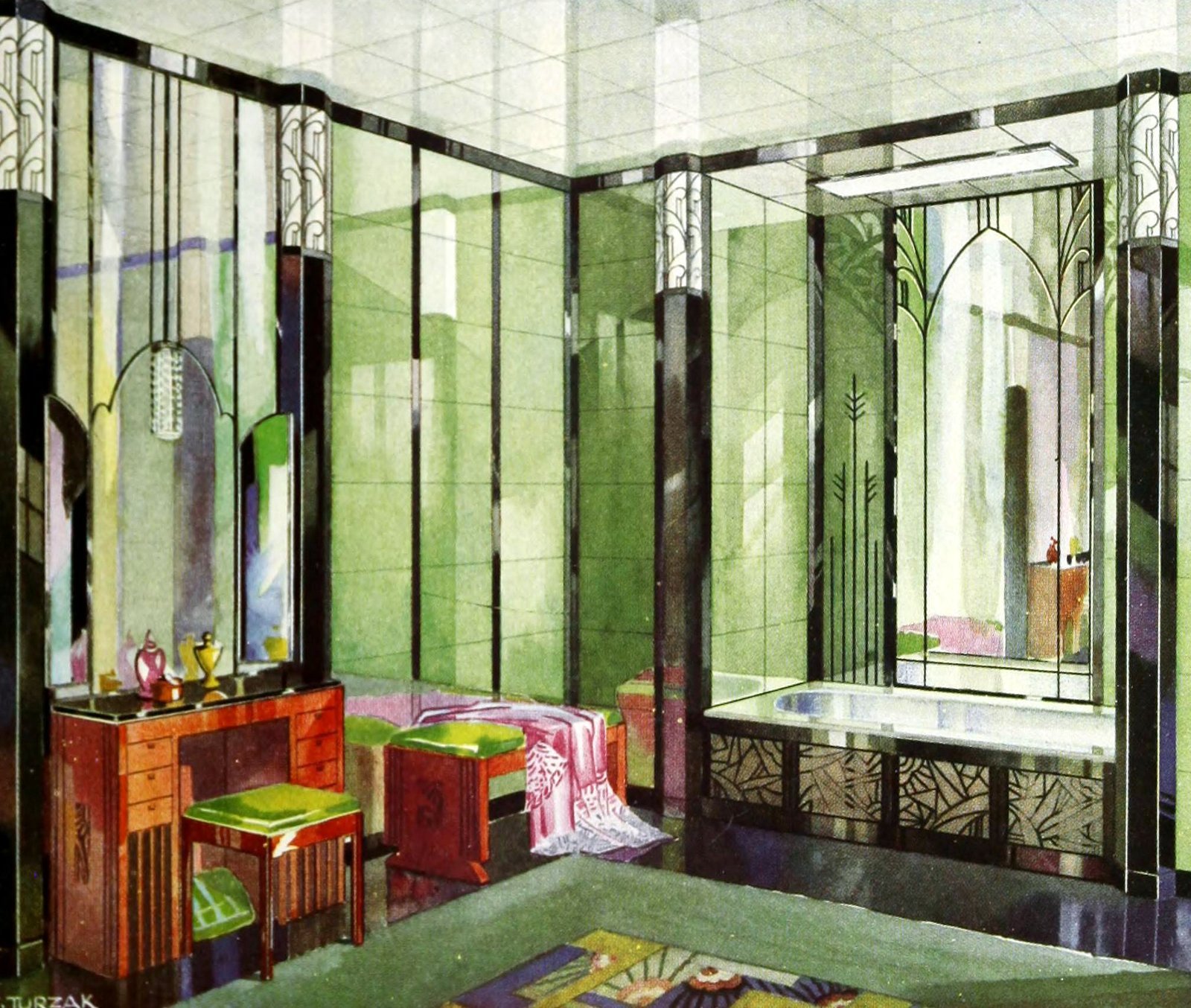

Old-fashioned kitchens from the 1920s
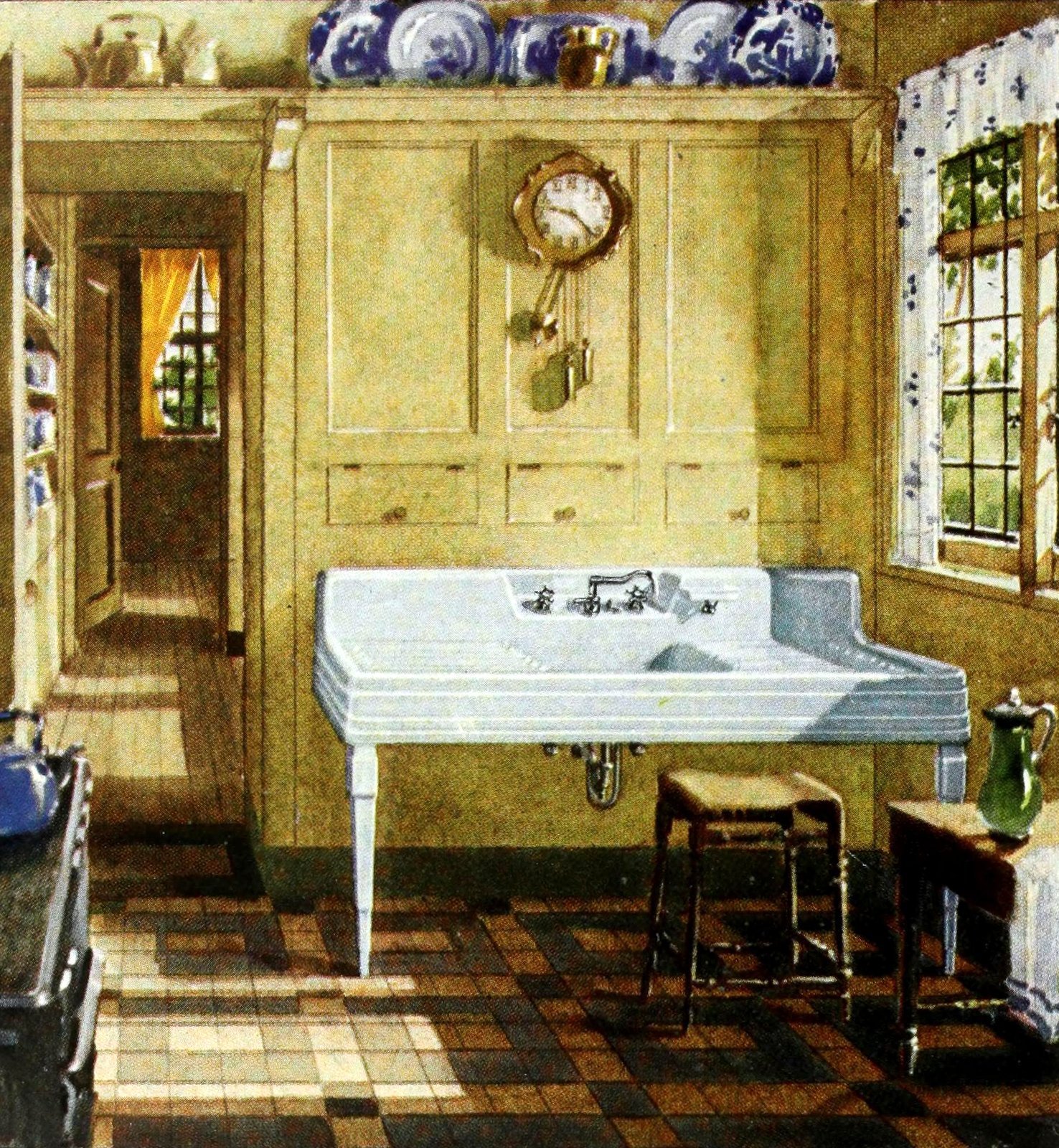
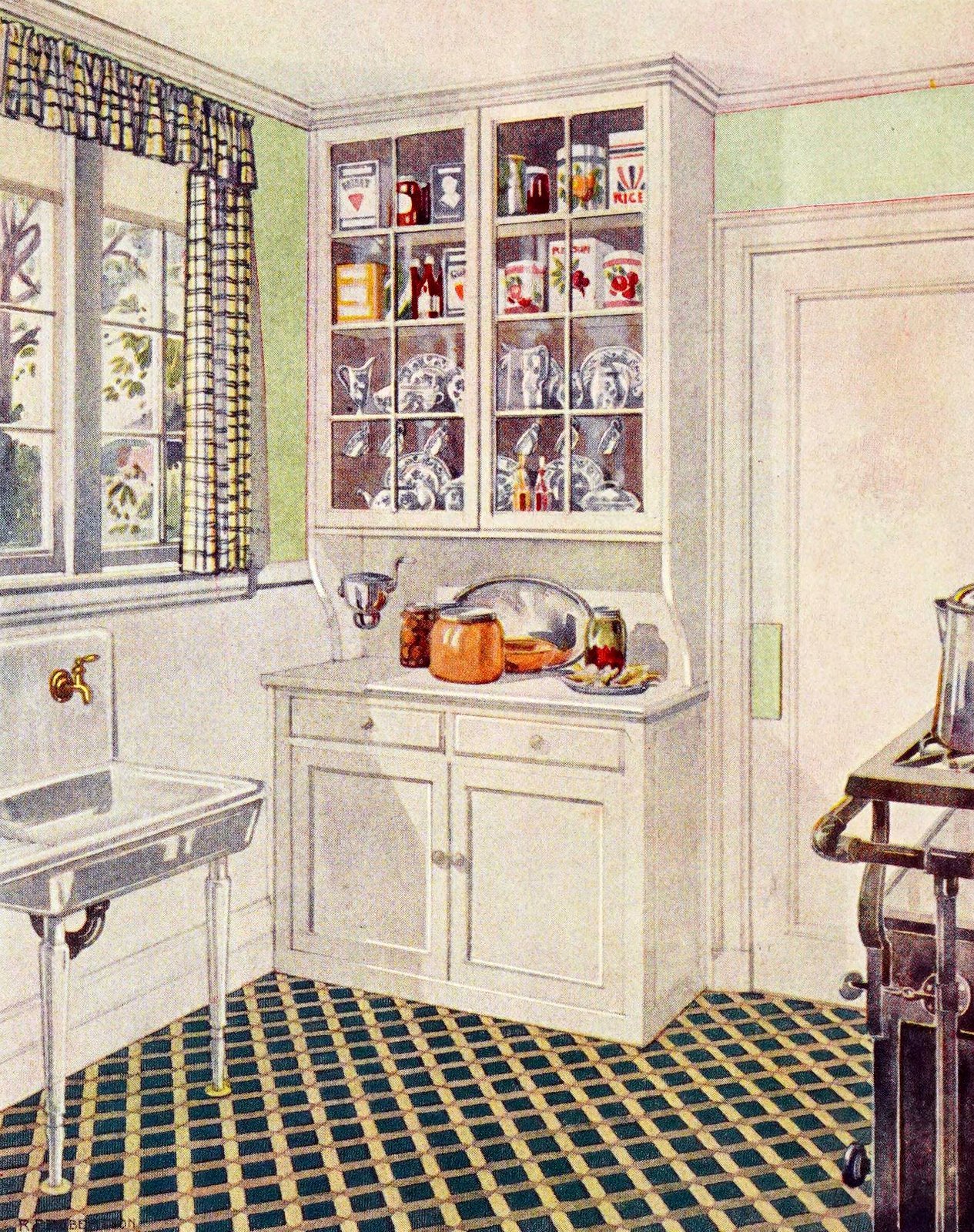
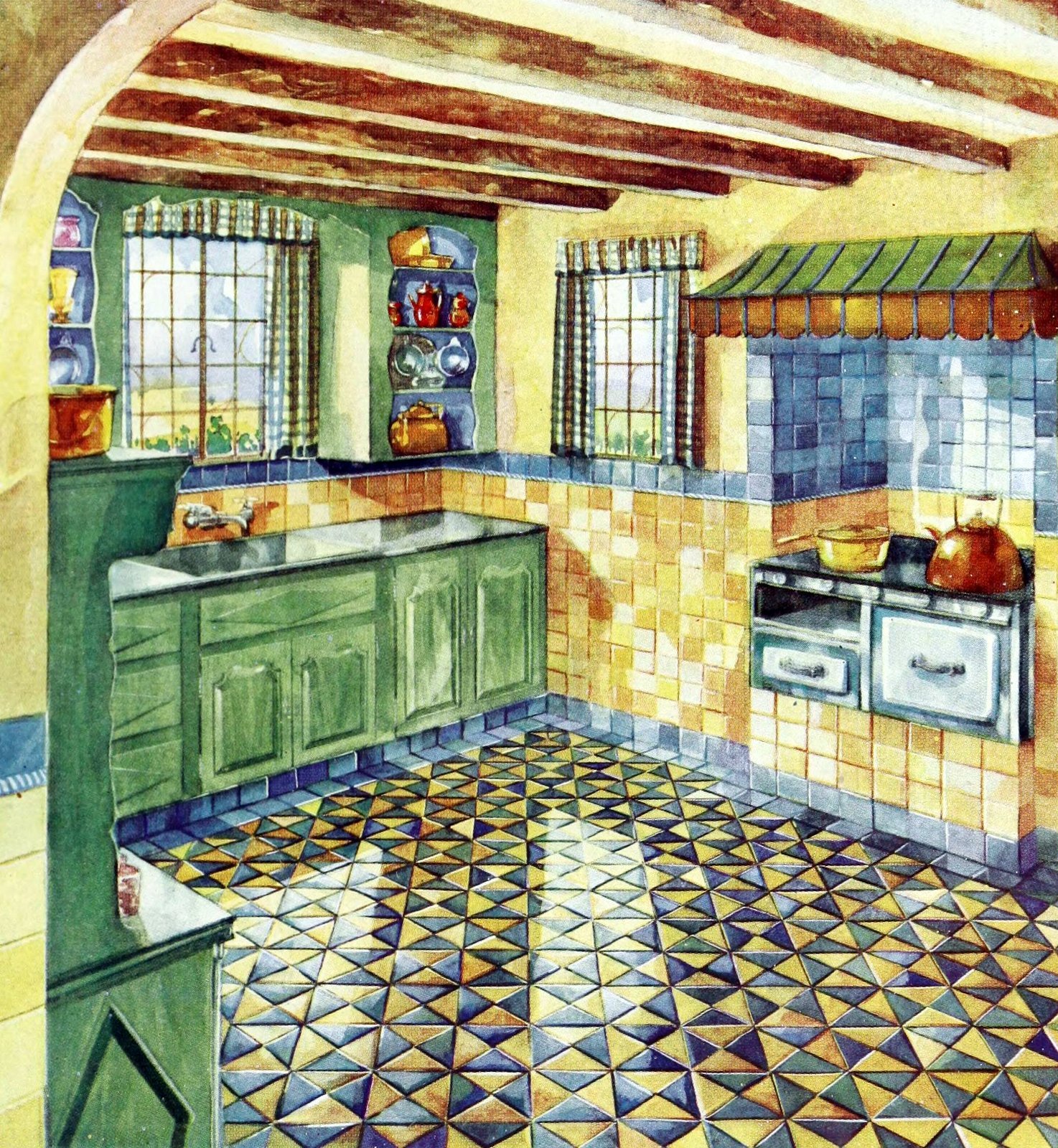
More vintage 1920s house decor
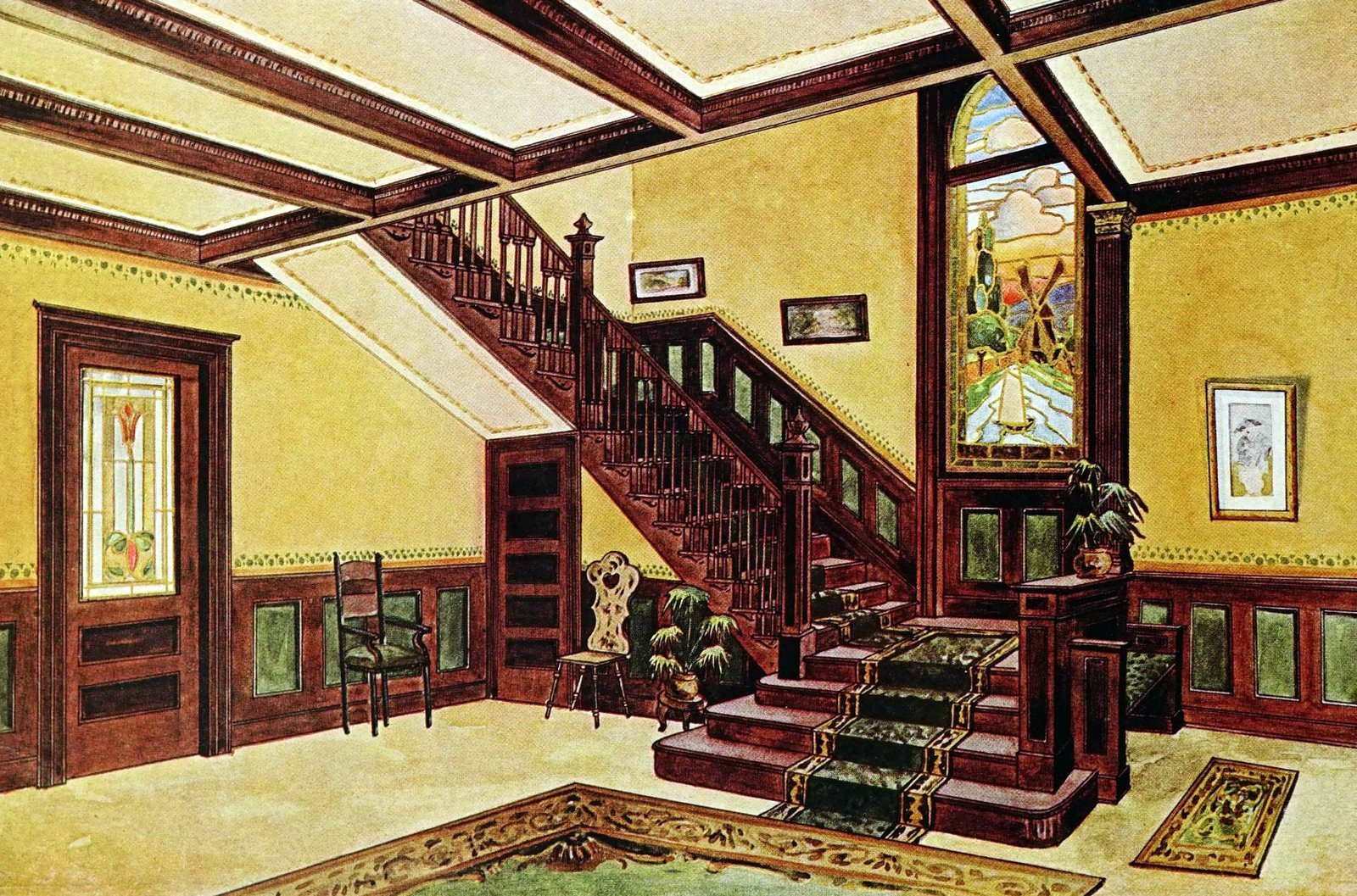


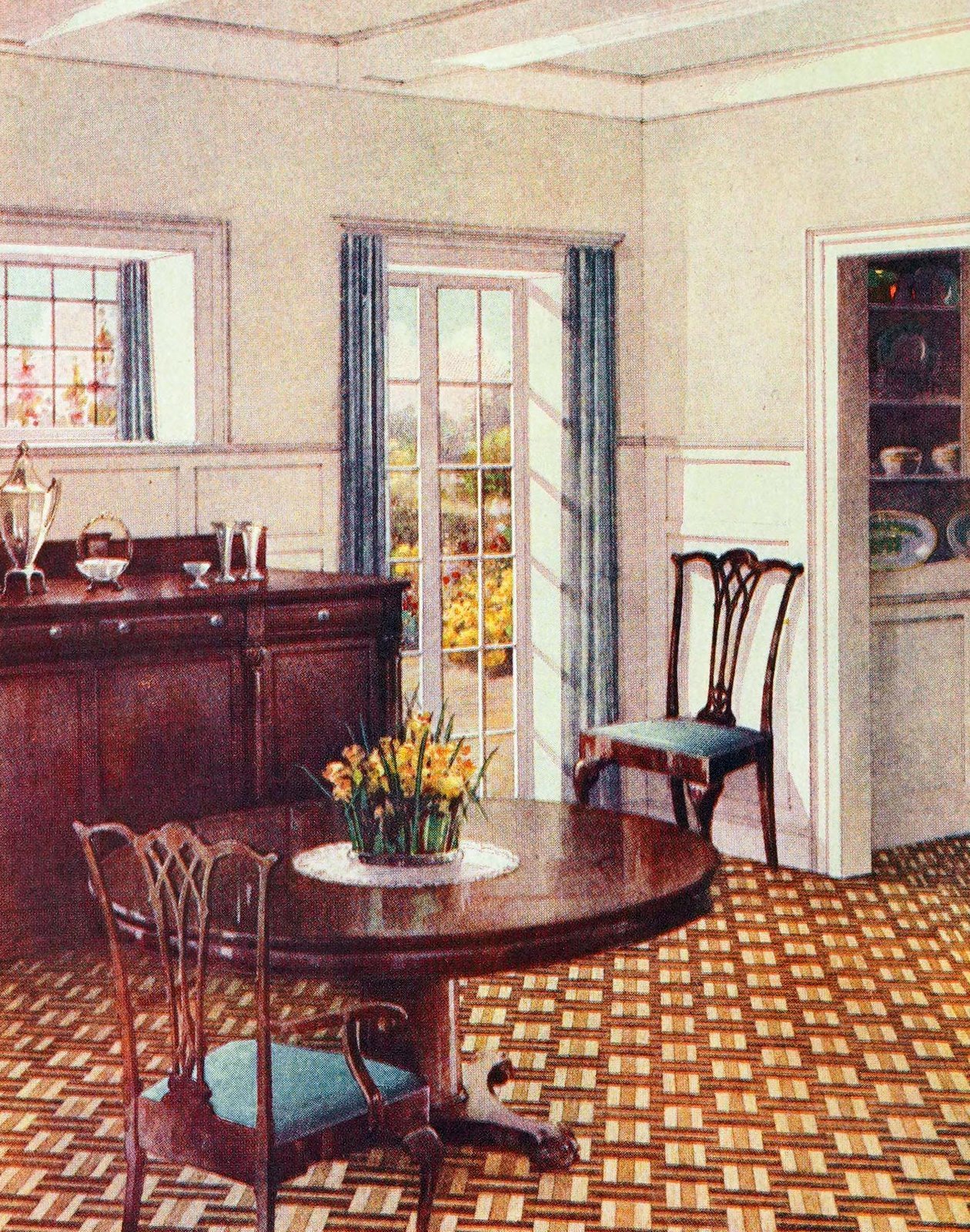
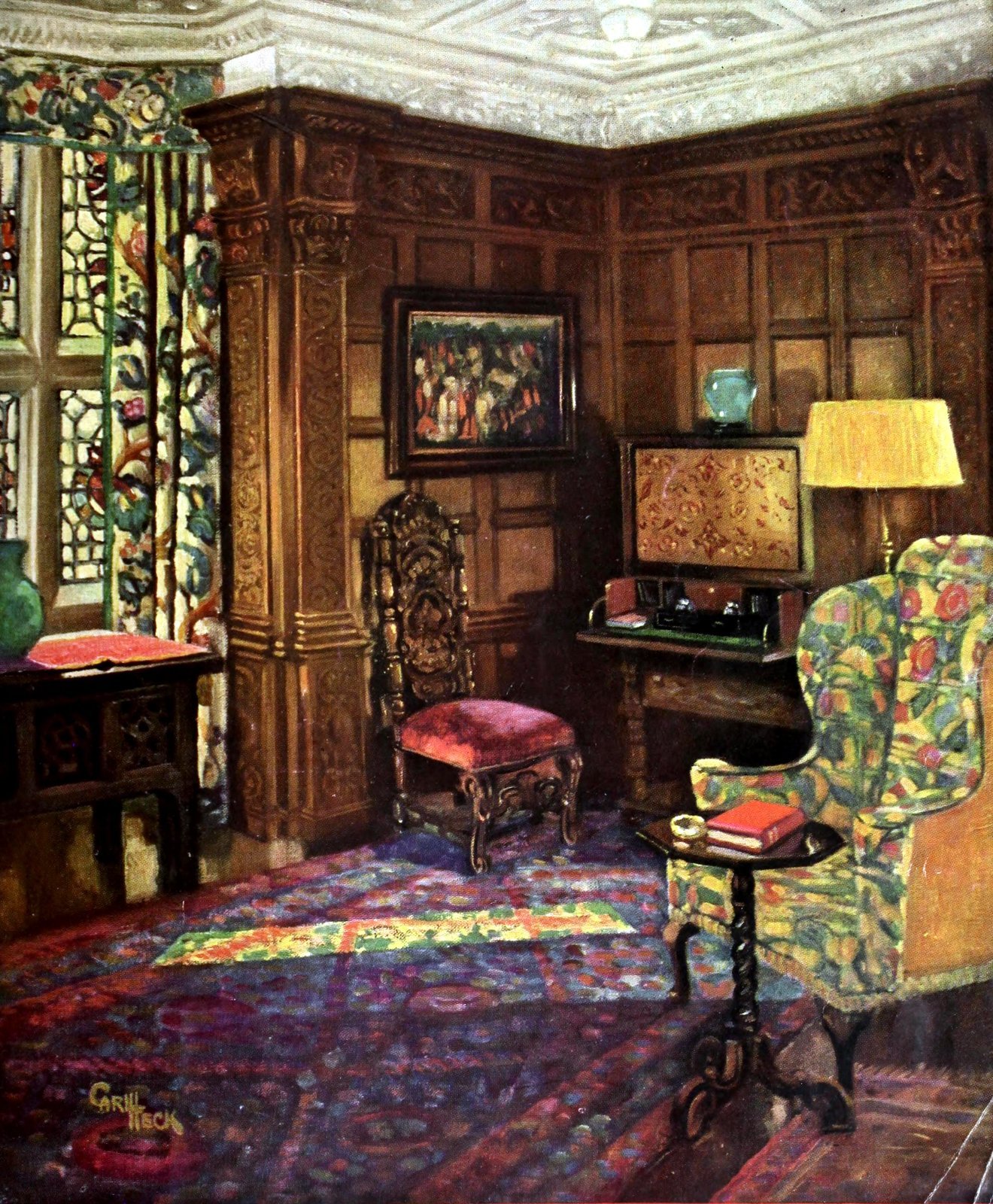

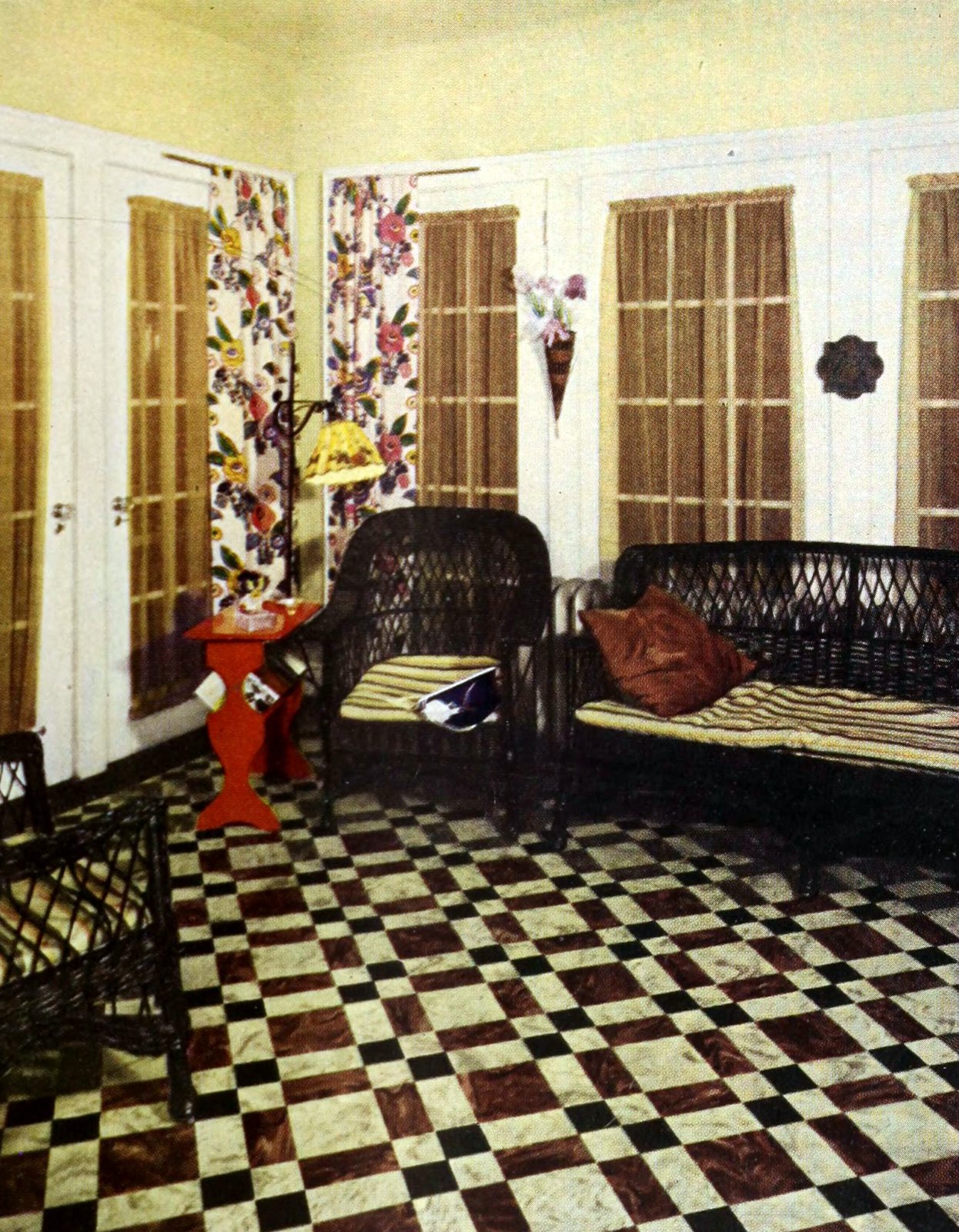
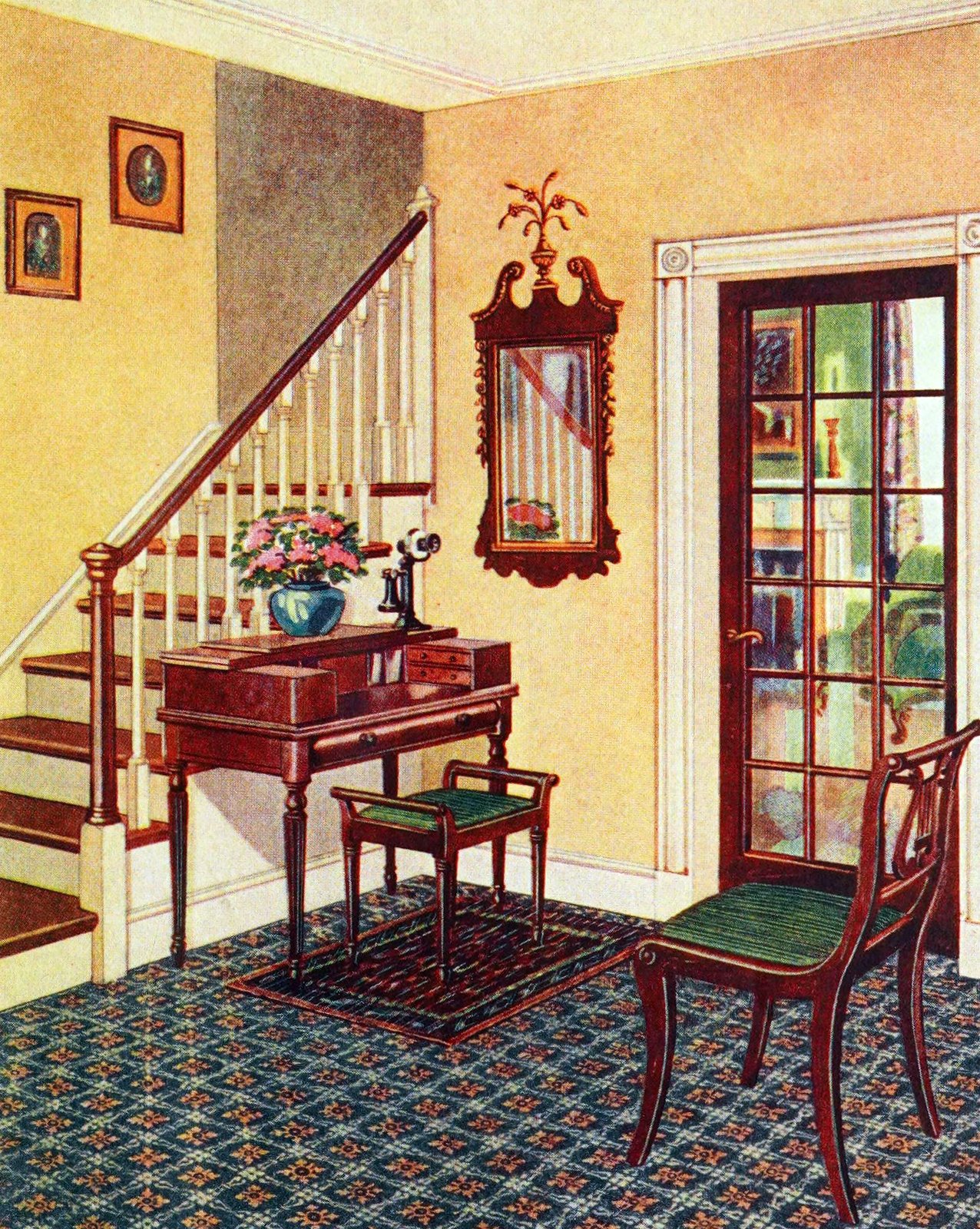
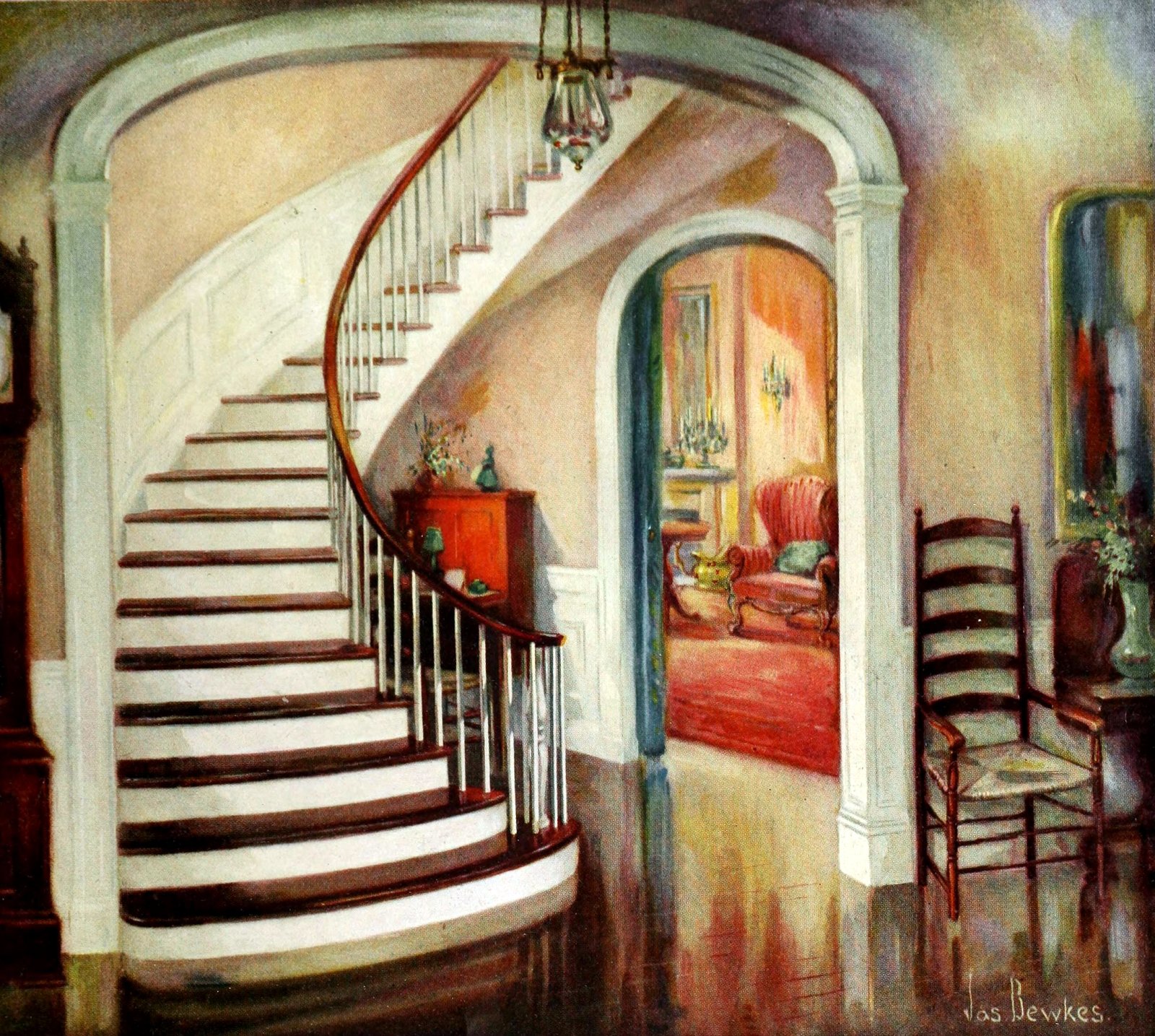
1920s home decor with the floor setting the theme
Invented in 1860, linoleum flooring was already very popular by this time, but what we really appreciate in these ads are the displays of what were considered beautiful modern rooms, inside of the kind of American home that just about anyone would have wanted to have.


Vintage parquet inlaid linoleum in a living room
This 1920s living room features linoleum flooring made to resemble inlaid wood parquet, combining the visual style of more expensive materials with the practicality of linoleum. It’s a strong example of how homeowners used patterned floors to add polish and structure to main living spaces without relying on heavy rugs or dark wood finishes.

1920s dining room decor
This dining room highlights the cleaner layout and lighter palette that defined early 1920s house interiors. The furniture is sturdy but not oversized, and the space feels open and easy to maintain. Meals could be served in a room that felt stylish without being overly formal, a contrast to the fussy Victorian dining rooms of a generation earlier.

A staircase landing with bedrooms in a vintage 1920s home
Even transitional spaces like stair landings were treated with more intention in this period. This landing is neatly arranged and visually connected to the adjoining bedrooms, suggesting a whole-house approach to decoration where every area — not just the main rooms — was considered part of the home’s overall 1920s home decor aesthetic.

DON’T MISS: 1920s house styles: 7 popular designs that shaped vintage suburban life
1920s home decor: Glorifying the attic
Instead of being used strictly for storage, the attic in this home has been converted into a bright, livable space. With its tidy layout and simple furnishings, it reflects how early 1920s homes began to make better use of square footage, turning unused corners into functional rooms that blended practicality with comfort — and were also pretty to look at.

An English dining room with a linoleum floor for a 1920s home
In this example, a formal-style English dining room gets a modern update with linoleum flooring that mimics the look of traditional tile. It’s a good snapshot of how linoleum was expanding beyond kitchens — it was being marketed for rooms where appearance mattered, showing off its versatility and ease of upkeep.
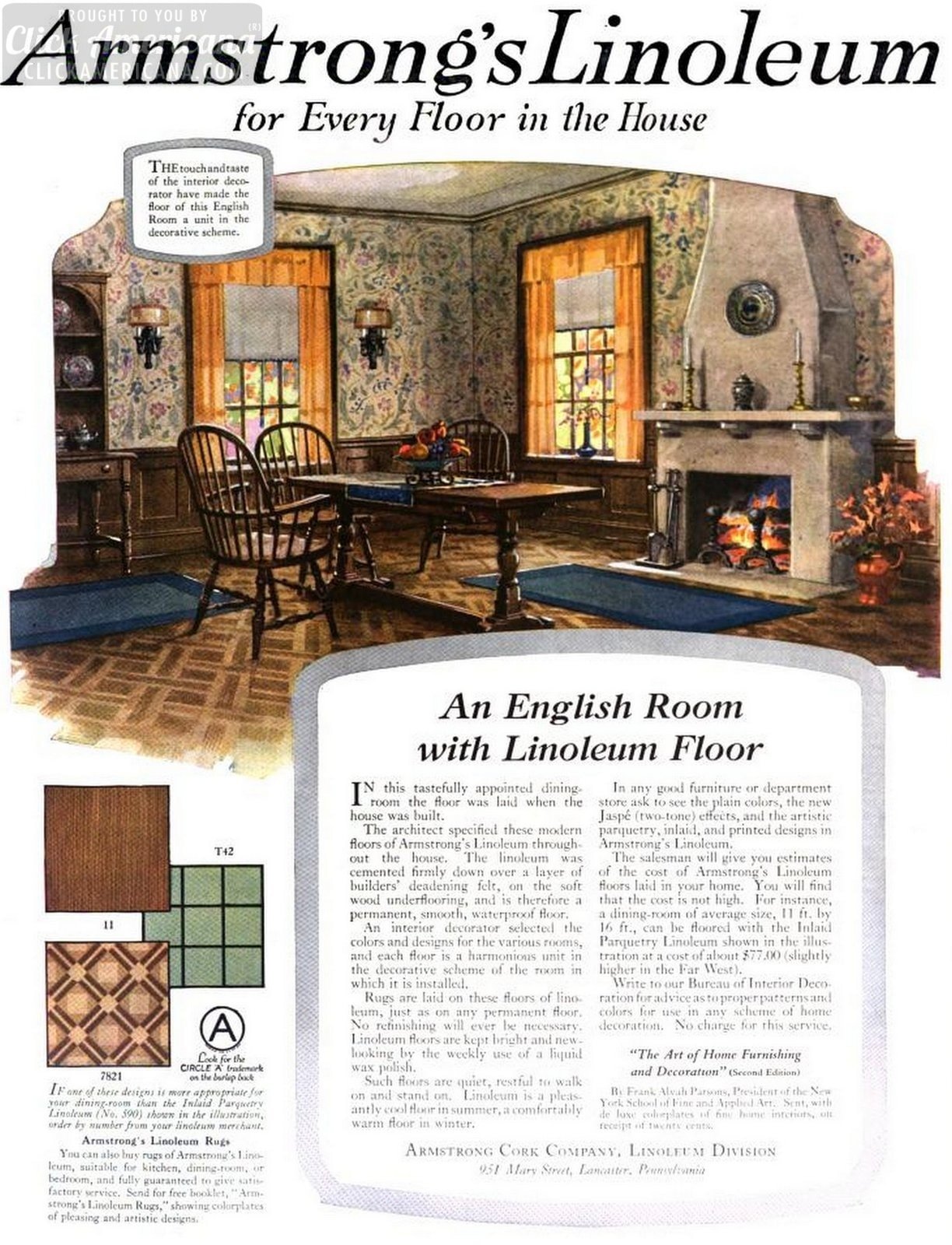
A 1920s bedroom for a young girl
This child’s bedroom is designed with care and purpose, showing a space arranged specifically for a young girl. The layout is simple but orderly, with attention paid to comfort and style without unnecessary clutter. Rooms like this reflect how the 1920s home was becoming more personal, with distinct areas for each family member.
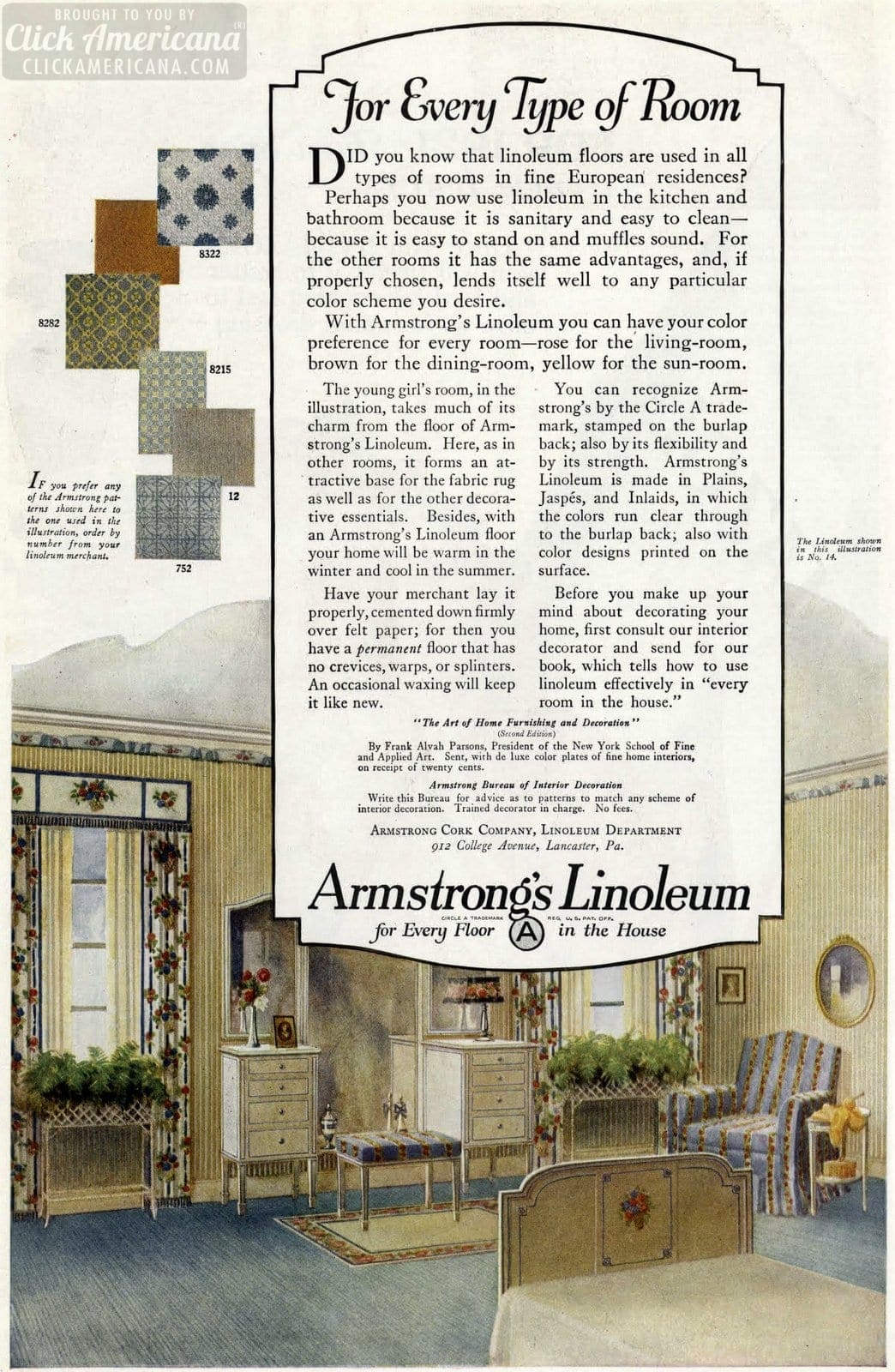
ALSO SEE: 14 quaint residential garage additions from the twenties
Simple bedroom decor from the 1920s
The clean design of this bedroom shows how the decade was moving decidedly away from the ornate. The beds and dresser are modest in shape and size, and the room is free from excess decoration. This kind of setup made spaces easier to keep tidy, and reflected the broader cultural shift toward simplicity and efficiency in the home.
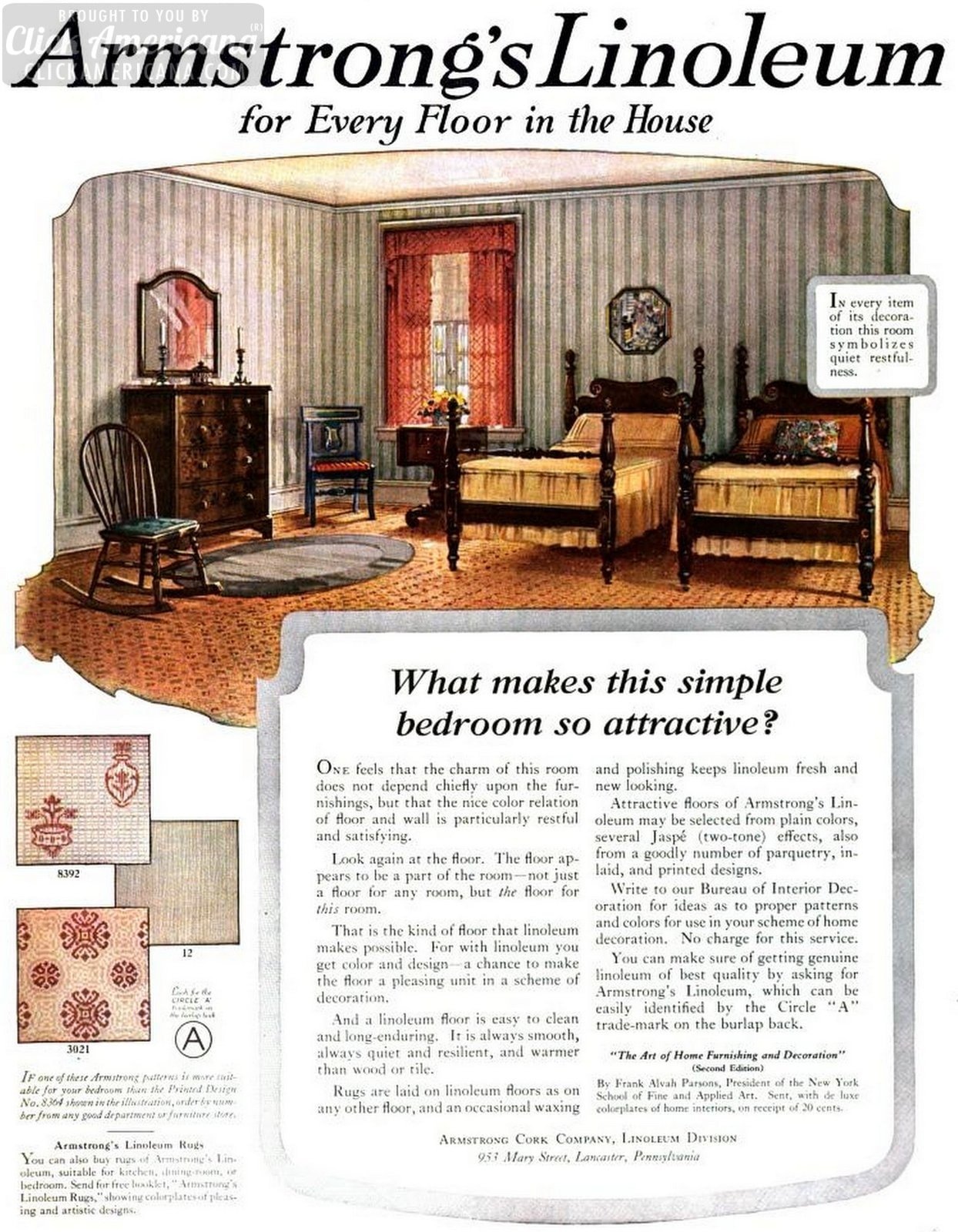
Vintage sun porch linoleum flooring for a 1920s home
Here, the sun porch has been treated as a real living space, not just an afterthought. The linoleum floor adds both texture and durability, while the large windows and furnishings make it a spot for reading, relaxing or casual conversation. In the 1920s, homes increasingly included these flexible spaces for daily use.
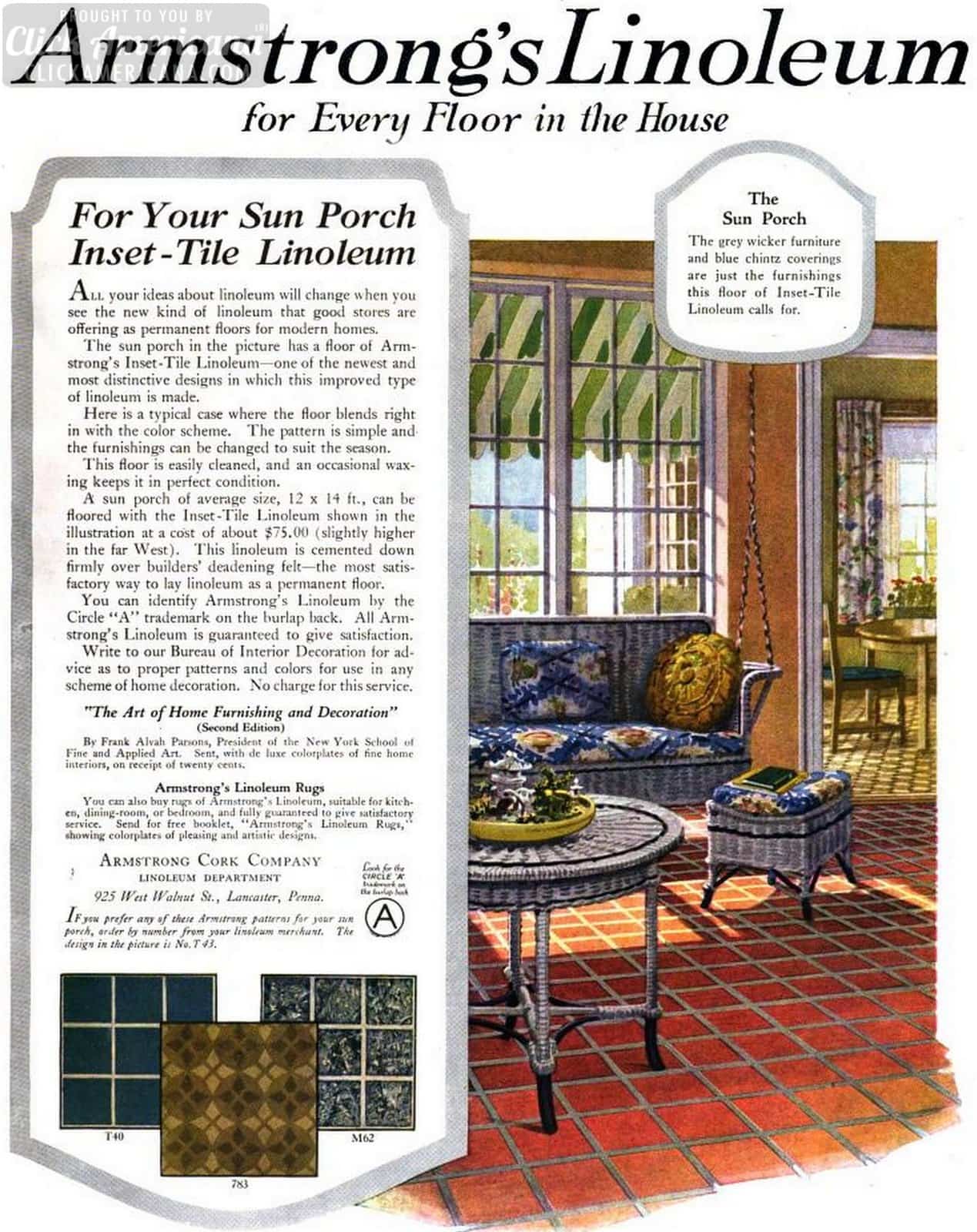
Vintage sunroom interior decoration from the 1920s
This sunroom setup captures the spirit of early 1920s home design: useful, light-filled and designed for everyday comfort. With seating arranged for conversation and decor that feels intentional but not overdone, it reflects how families were creating inviting corners throughout the home.

A child’s nursery decor from a 1920s home
A nursery designed for daily use and easy care, this room reflects a growing attention to childhood needs within the home. From the small furnishings to the playful touches, it shows how the idea of giving children their own defined space was becoming more common even in middle-class American households.

Armstrong linoleum rugs for the kitchen
Patterned linoleum rugs, like the one shown here, helped define work zones in the kitchen while also protecting the wood floors underneath — either from wear in busy areas or to cover up existing damage. The printed designs added visual interest without the upkeep of fabric rugs, and the borders gave the room a more finished look. These patterns also brought a little extra style to a space that was becoming more central to family life, as kitchens started to shift from strictly utilitarian rooms to more visible and integrated parts of the home.
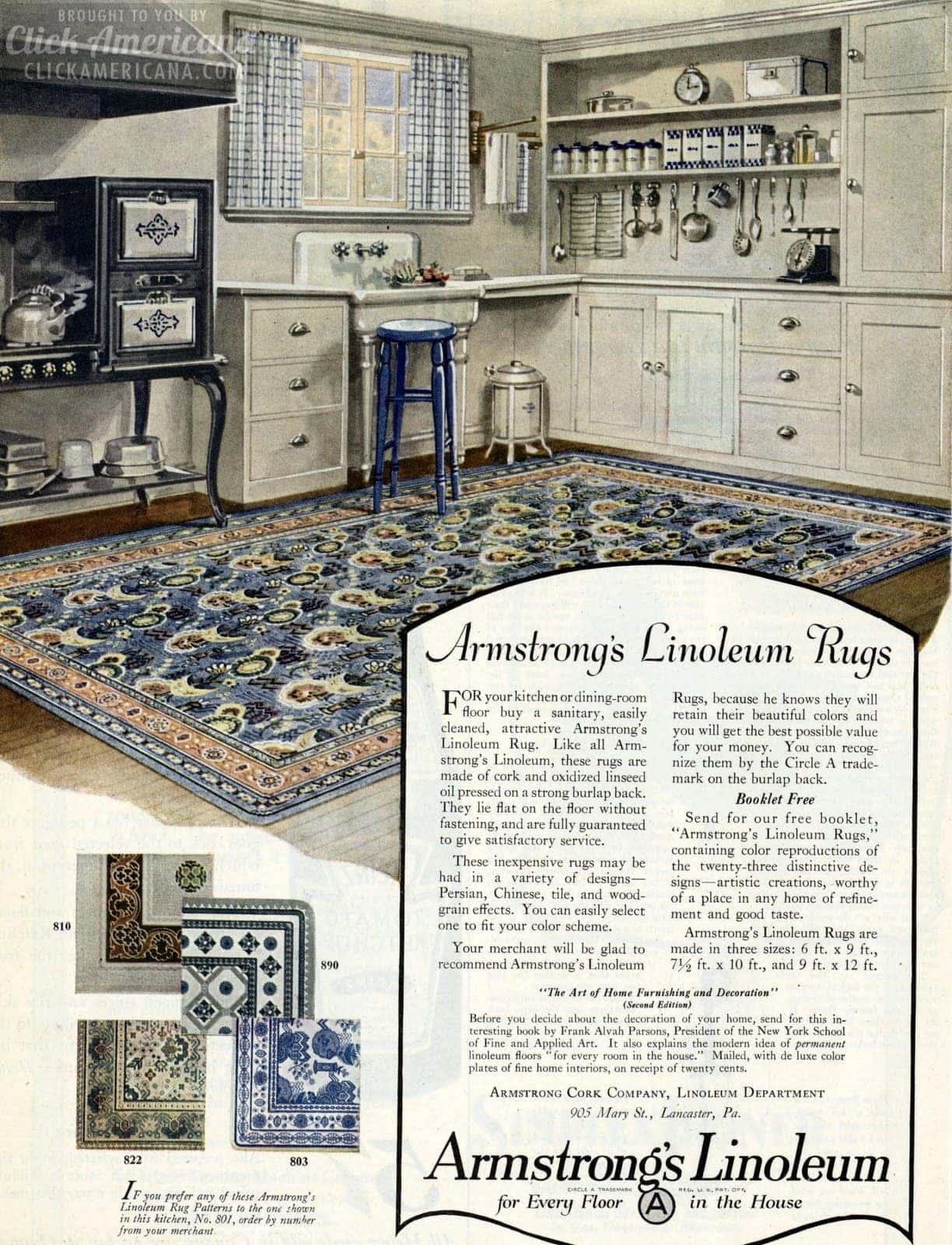
DON’T MISS! Need vintage home restoration inspiration? See 60 authentic tile patterns from the 1920s
Cheerful, inviting living room decor from the 1920s
This living room strikes a balance between comfort and order, with furniture that’s practical and arranged for conversation. The lighter colors and decorative details point to how early 1920s living spaces were designed to feel both lived-in and visually put together.
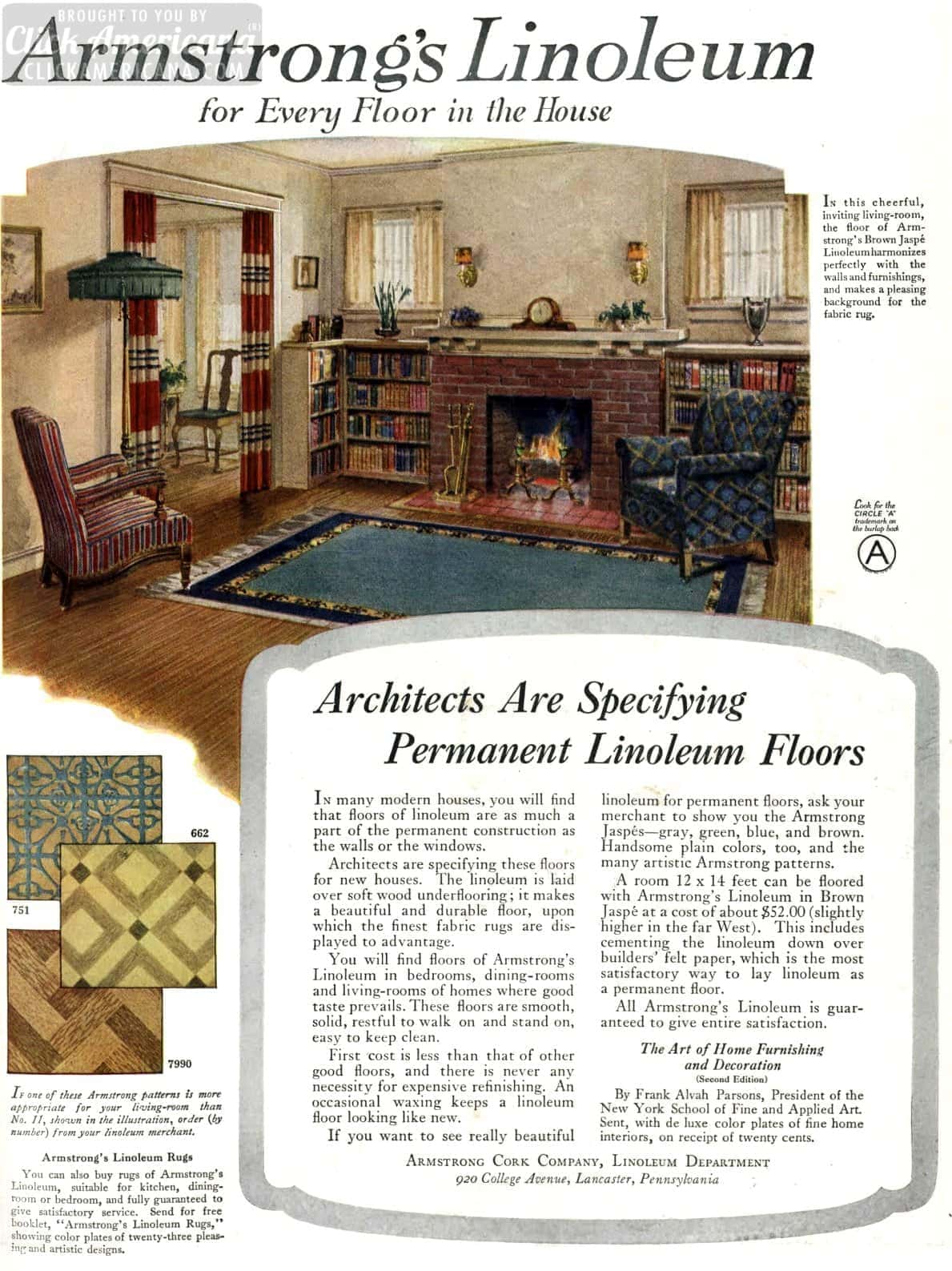
Vintage bedroom decor from a 1920s home
A neatly made bed, coordinated furnishings and simple wall decor show how bedrooms in this period were moving toward a quieter, more restful atmosphere. The look is modest but intentional, reinforcing the idea that every room had a role to play in the overall harmony of the home.
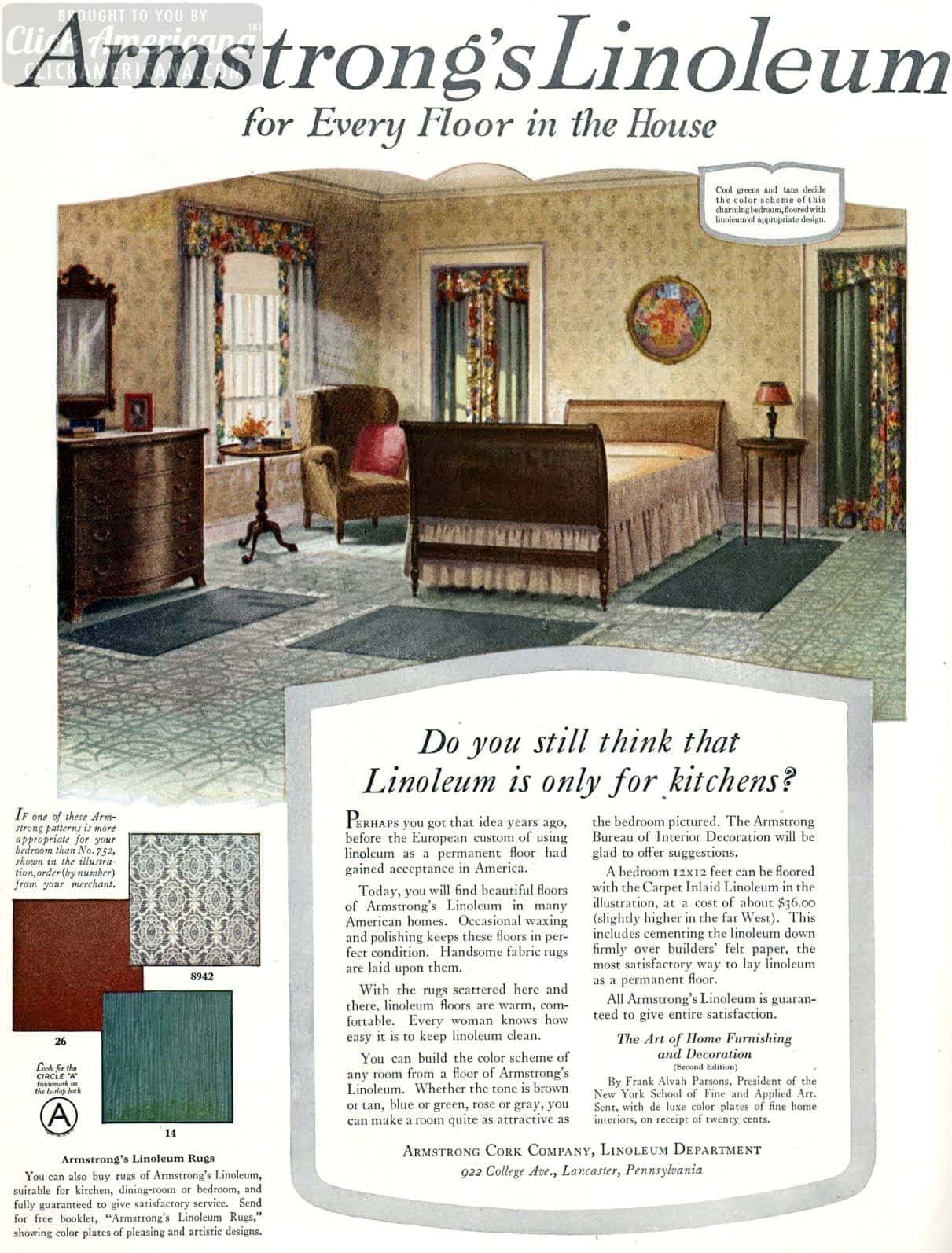 SEE MORE: Back in the 1920s, people who had home phones were the big spenders
SEE MORE: Back in the 1920s, people who had home phones were the big spenders

